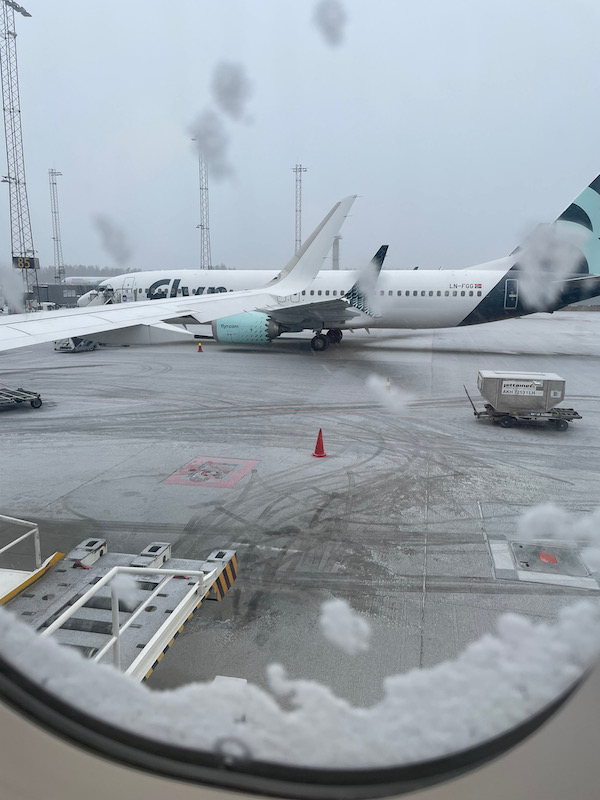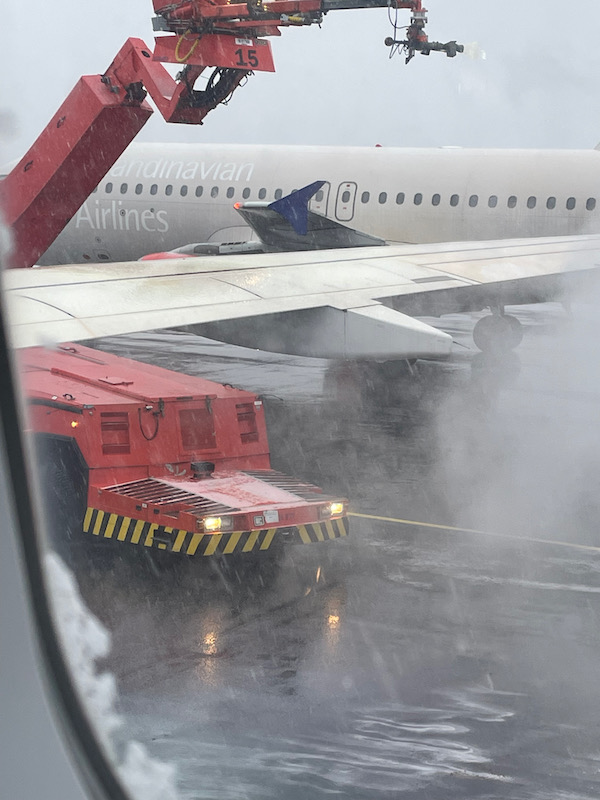Our Blog - Oslo, Norway
This year, we decided to try a Christmas Market in a country we hadn't been to. After a couple different options, we decided on Oslo, Norway. Susan had been to Norway on business more years ago than she wants to admit to, but Tom had never been to Norway so it sounded like a good choice. Mind you ... Norway and December don't normally go together well unless you like cold weather!
Norway has a long history, although not as old as countries in continental Europe. The Vikings lived in Scandinavia for quite some time, and traveled by sea to settle in England, Ireland, Iceland, Greenland, and France. In fact, the history of the Normans that lived in Northern France and then went to England were a combination of Vikings and some of the indigenous people. They even traveled to Newfoundland and became the first Europeans to reach North America. The so-called Viking started in the 700's and Oslo was founded in 1040.
Norway and Denmark were fairly tightly linked together for a large part of Norway's history. The original settlement (named Anslo) was across the bay from the current city but there was a fortress named Akershus Fortress that was built around 1300 by King Haakon VI of Norway. The old Oslo was destroyed several times by fire and in 1624, Christian IV of Denmark decided to rebuild a new city closer to the fortress, and named this new city Christiania. This name remained until 1925, when it was renamed Oslo. Many of the wonderful buildings in the downtown area date from the 1800's, when a large number of new state government buildings were built, including the Royal Palace (1848).
I took a couple pictures from the plane as we were coming in for landing, to show the landscape. Agriculture is a fairly large part of their economy, even though the mountainous terrain and the climate wouldn't seem to be very hospitable for agriculture. You can also see that there isn't all that much snow yet (early December) on the ground.
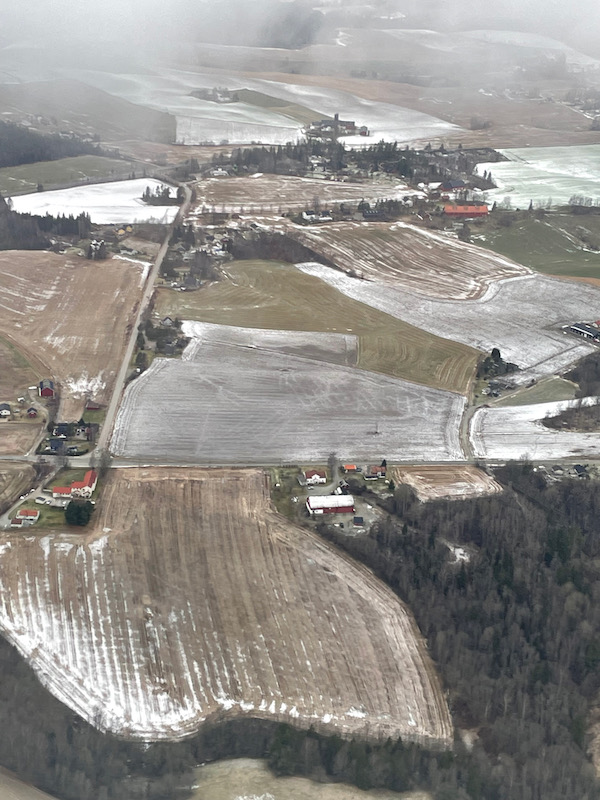
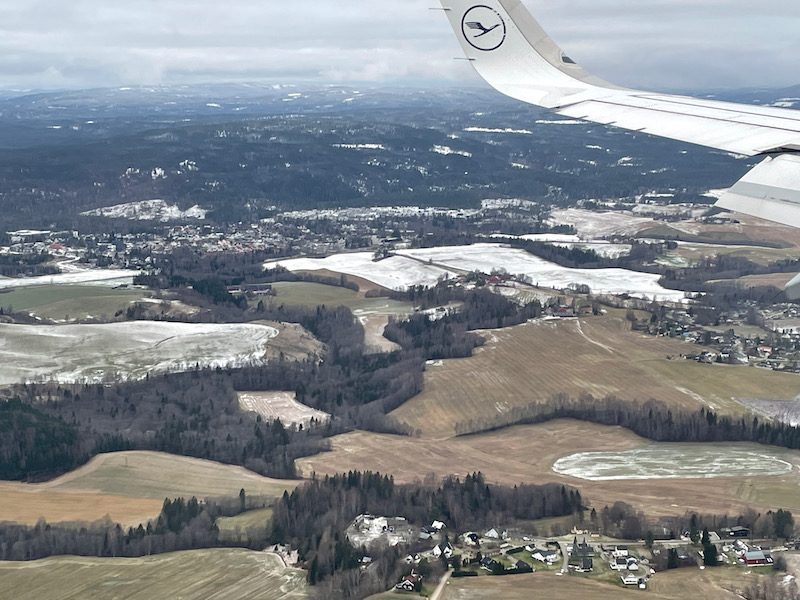
One of the things we like about Europe is that many of the larger cities have good transportation to-and-from the airport. In this case, an express train that runs every 10 minutes directly from the airport to the main train station in the city center, taking just 19 minutes! The train station was quite nice inside and was decorated for Christmas.
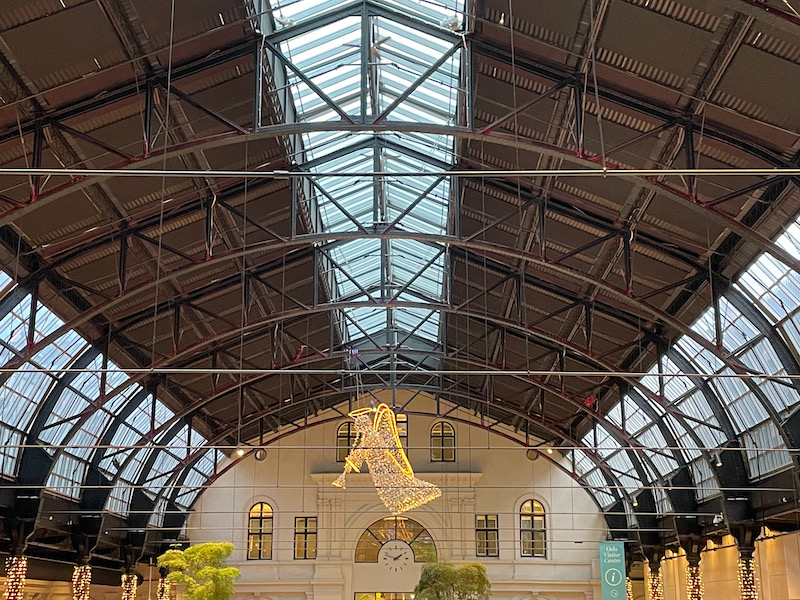
We picked a historic hotel for this trip, the Hotel Bristol. In 1912, the idea for the hotel was born and a plot of land was bought. After knocking down the old houses that were there, construction began in 1918 and was completed in 1920. At the time, it was the most modern and luxurious hotel in Oslo. It was expanded in 2000 with new rooms and a wellness center, and then from 2016 to 2019, a renovation was done. Here you can see the old chandeliers and the coffered ceilings.
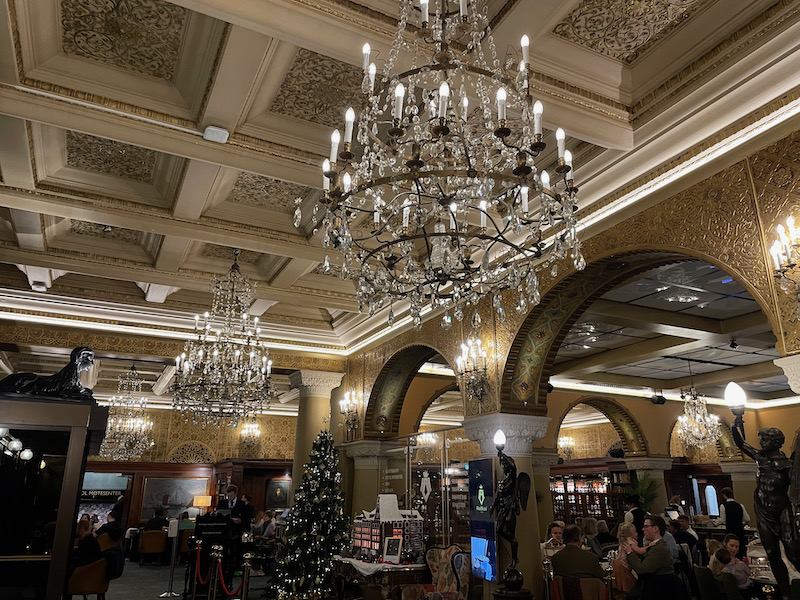
Our main purpose for the trip was the Christmas Market. There were several Christmas markets in various parts of town, with this one, Vinterland, being the main one. We visited several of them but, unfortunately, we were a bit disappointed by them. A couple of the indoor ones had lots of places to drink and meet up with friends along with a few little stands selling handcrafted items. The larger Vinterland had a skating rink and a ferris wheel, but the selection of food, drink, and Christmas trinkets was (in my opinion) very limited.
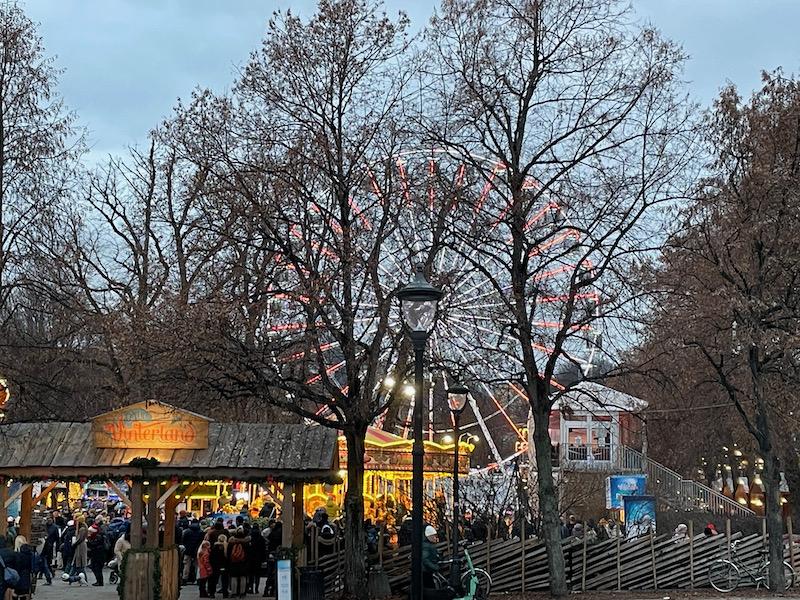
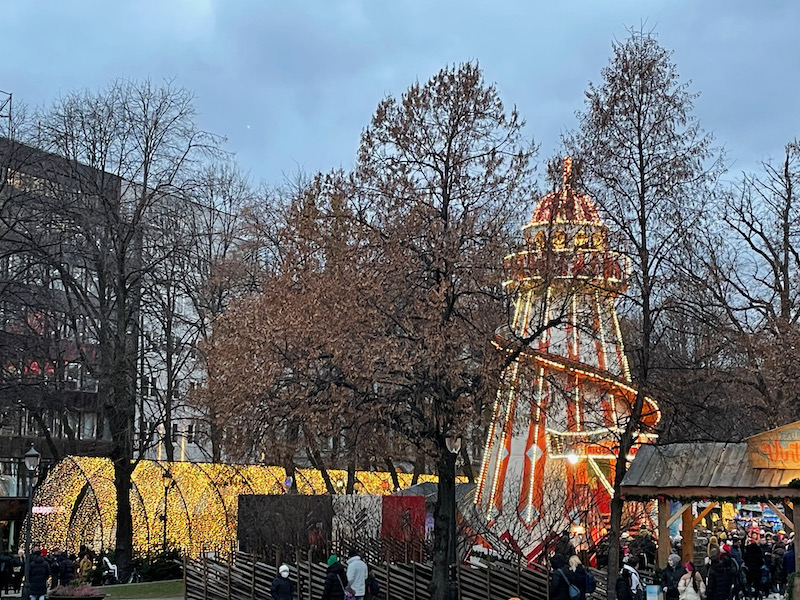
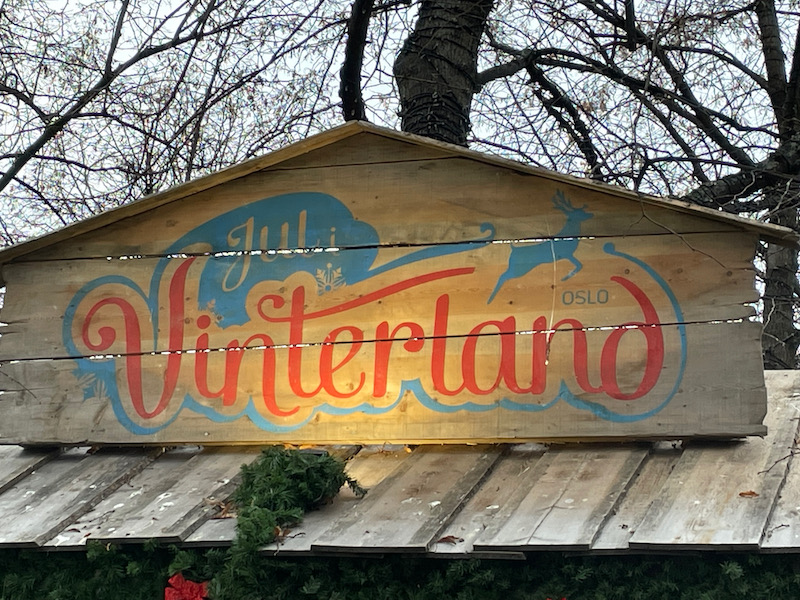
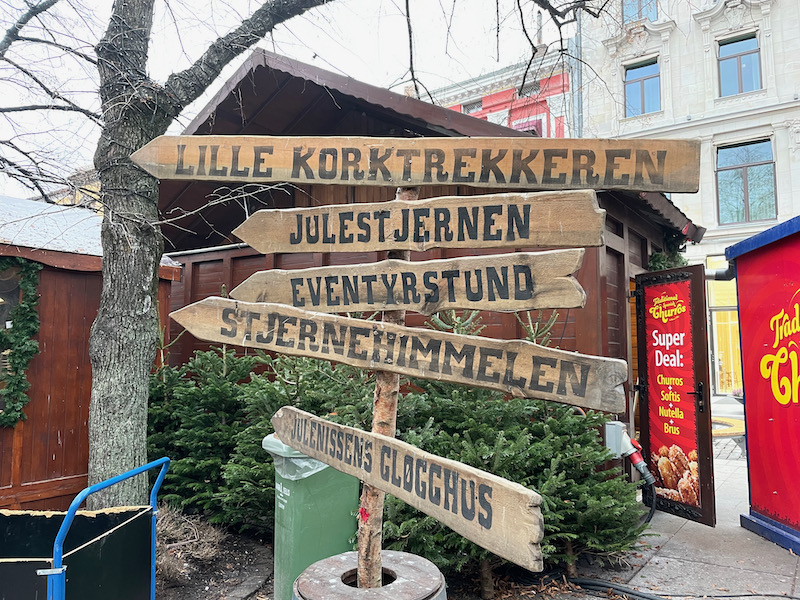
A little video with a couple moose who would talk and sing. My Norwegian is a bit rusty so I didn't quite get the jokes!
I took a few pictures as we walked around the first afternoon. Here we have a wall of the old fortress, and then sights around the Fjord. The large glass building with what looks like snow slopes around it is the Opera House (you will see much more of it later). Then to the right of that is a tall building which is the Munch Museum (showing art from Edvard Munch). In front of that is a piece of art named "She Lies" (I'll add more later on this one as well).
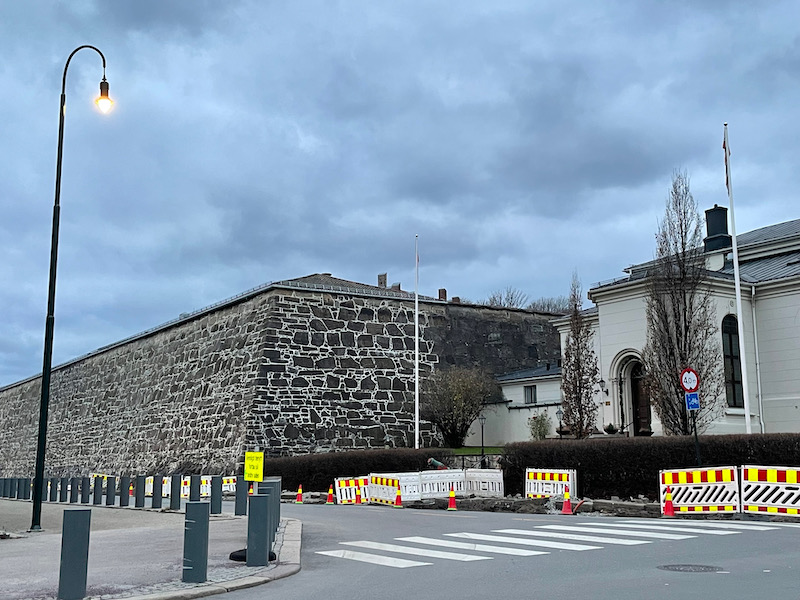
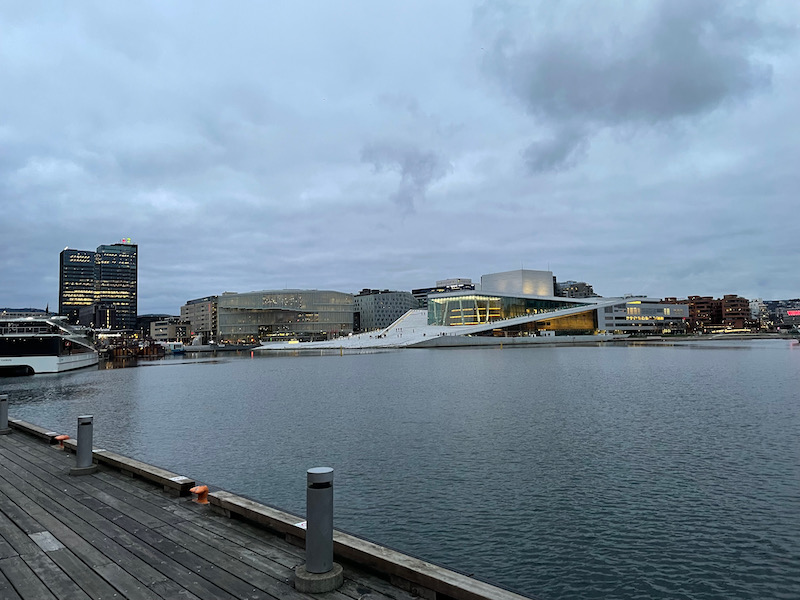
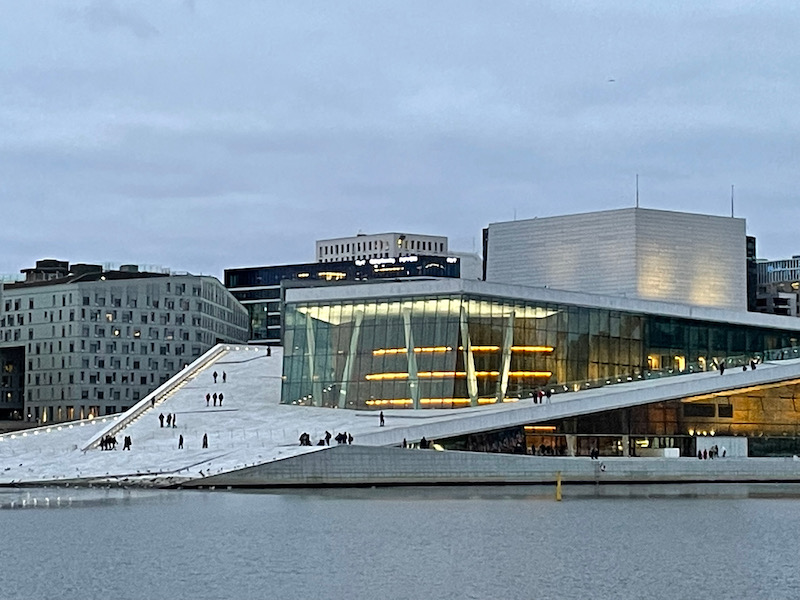
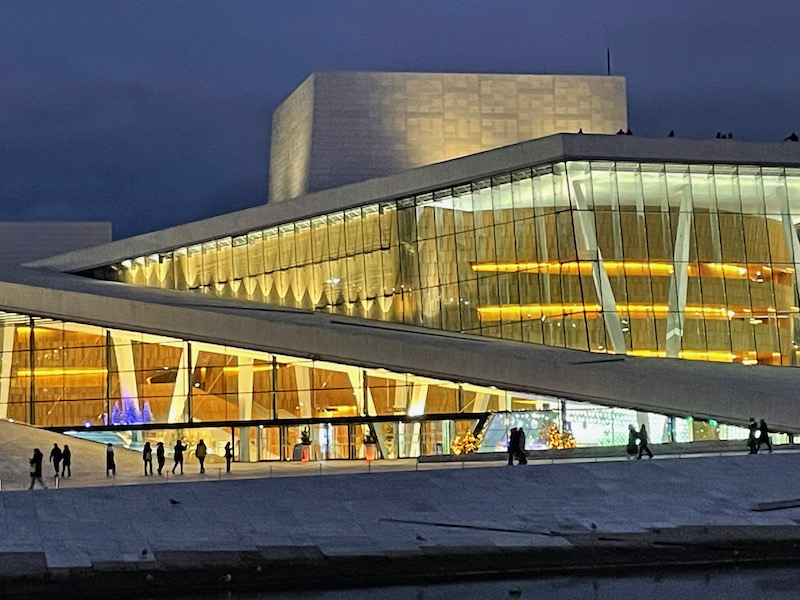
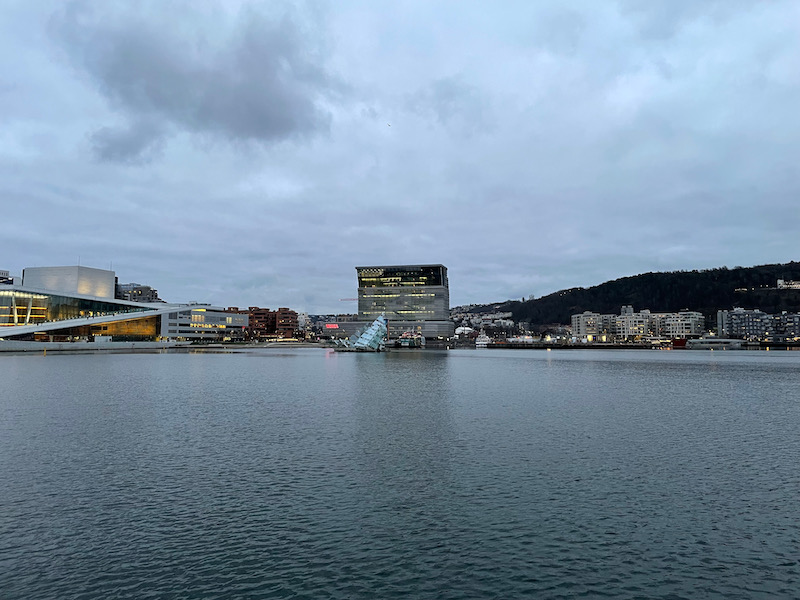
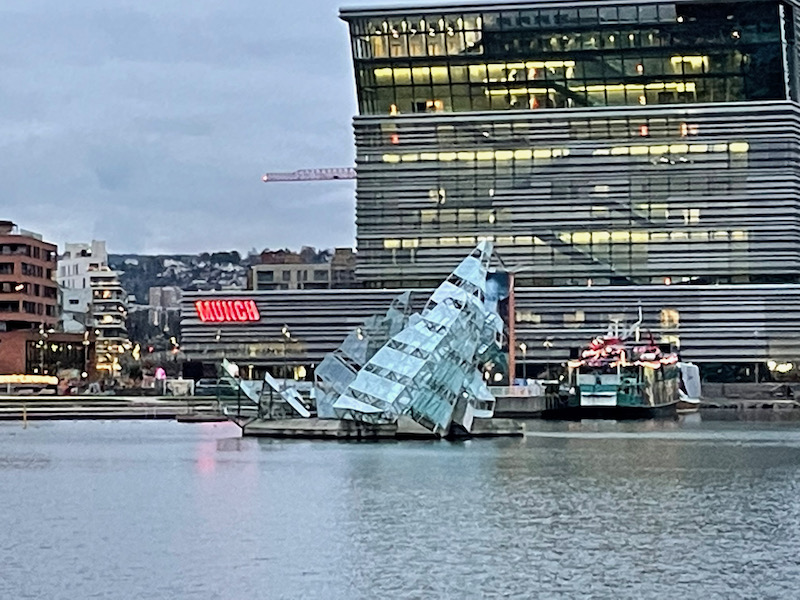
Further down the fjord is the area that our tour guide pointed to when she mentioned the original Viking settlement.
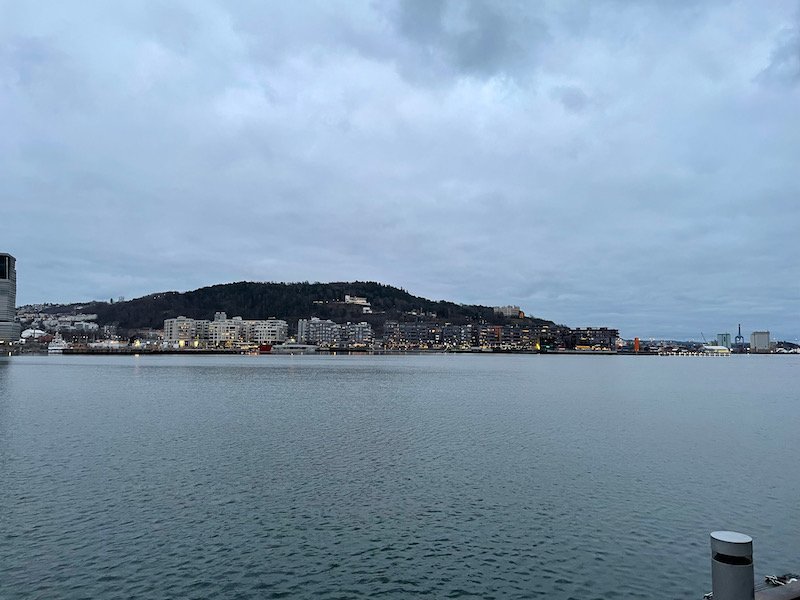
One thing that seems VERY popular in Oslo (and probably in Scandinavia in general) are saunas. Along the water are little cabins that are floating saunas. You can go into a communal sauna or book a small private one. We saw people who were going in and out of them (yea, BRRRR ... they were in swimsuits at below freezing temperatures!) and some even jumping into the Fjord to cool off after exiting a sauna.
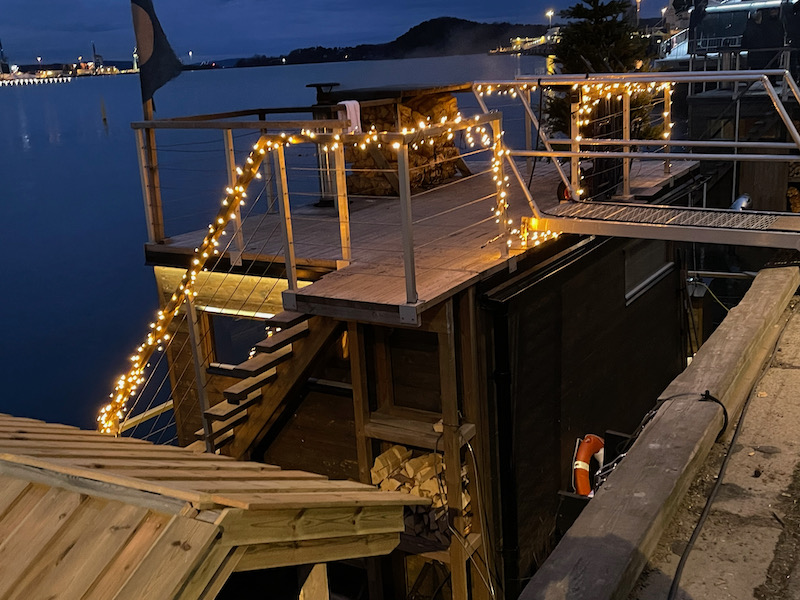
There are lots of fairly modern buildings along with a few older ones that are in great shape.
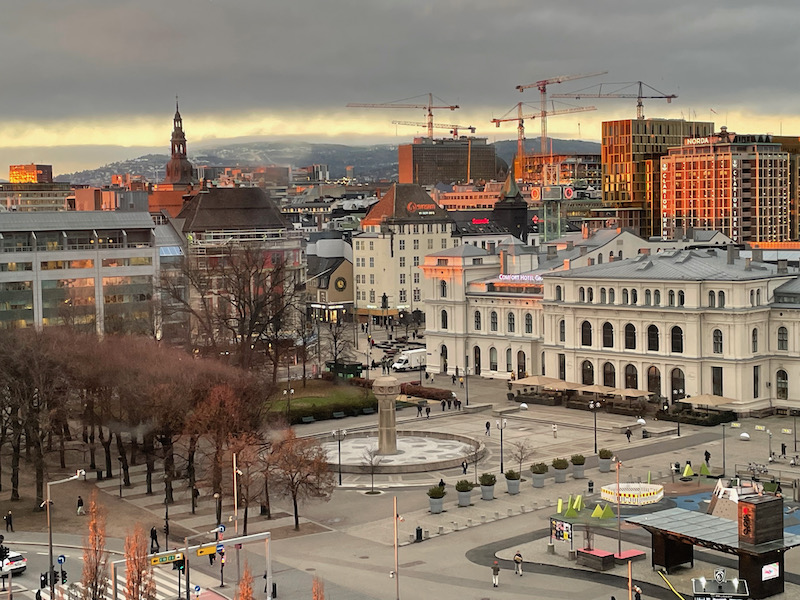
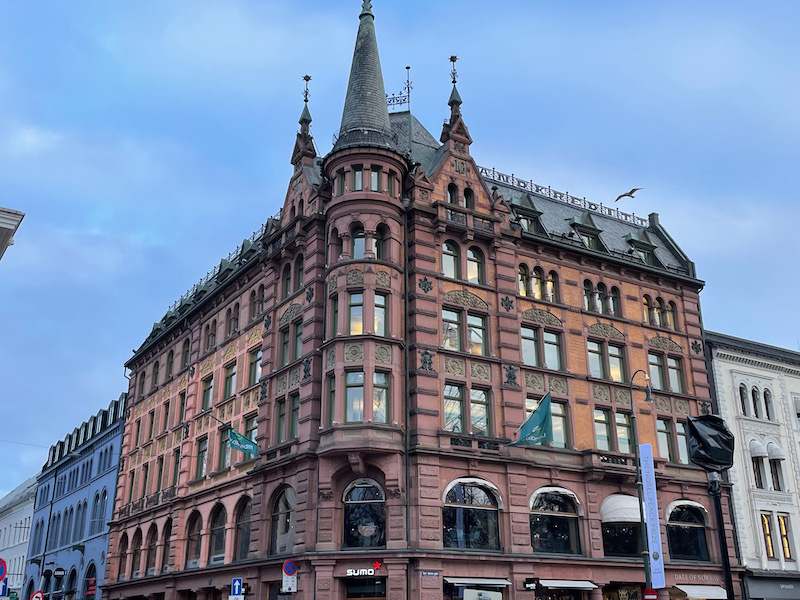
You can see it is getting darker in my pictures although it was only 5pm! But it did give me a chance to get some nice photos of various Christmas lights around town.
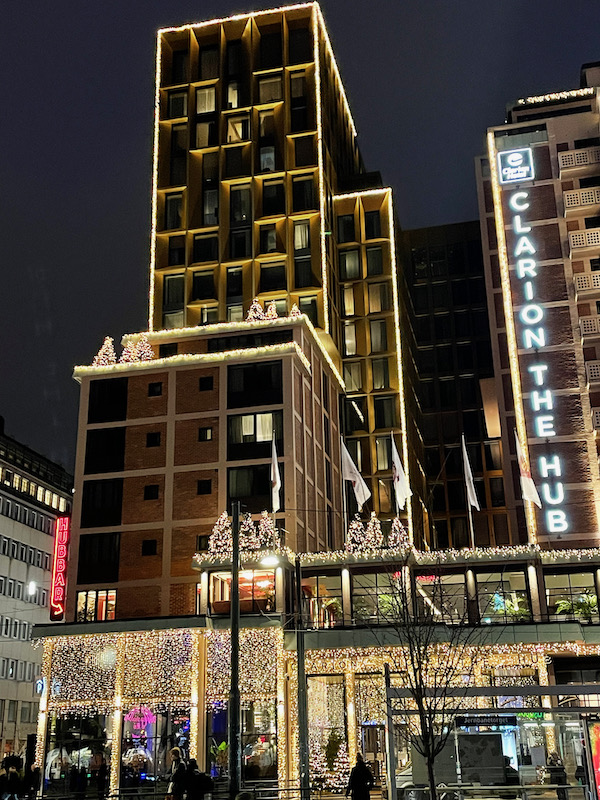
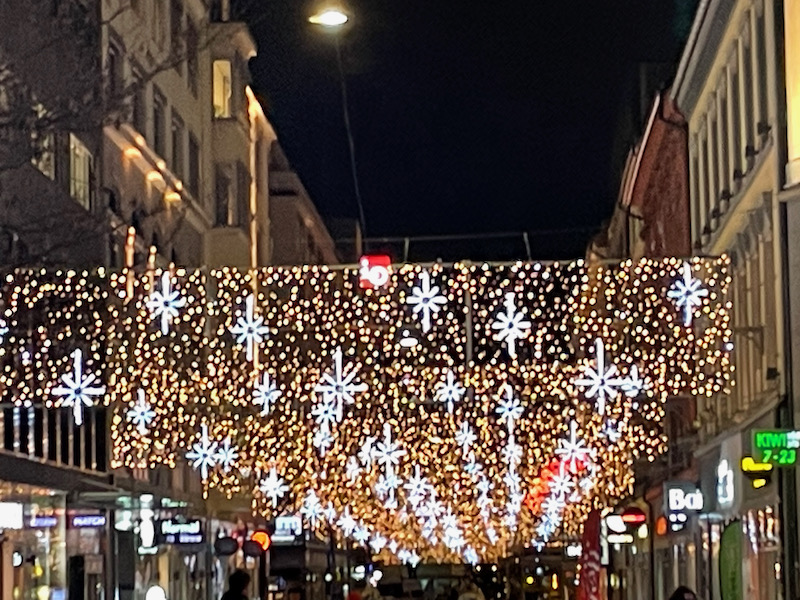
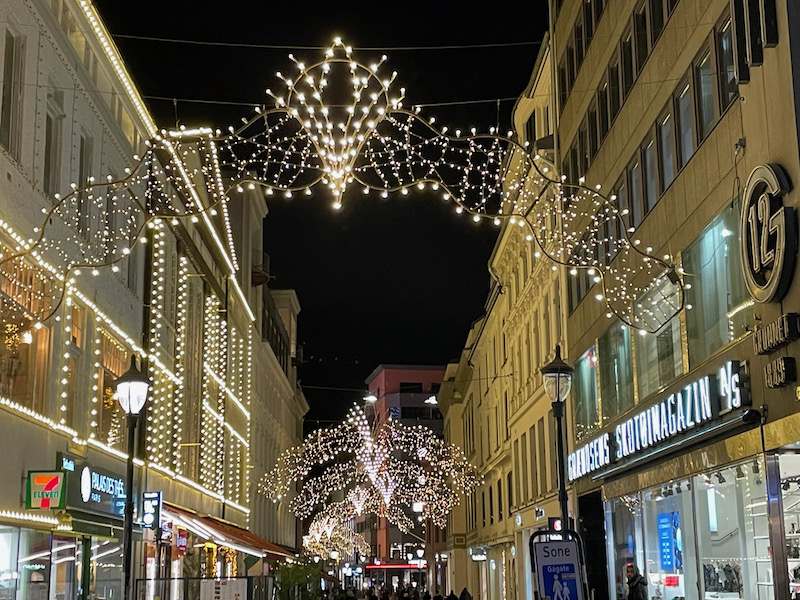
In front of the main train station is this large bronze tiger statue, which is probably the most photographed thing in the city. It was created in 2000 by the artist Elena Engelsen. Why a tiger? The city's nickname is Tigerstaden (or Tiger City) and most say that it comes from a Norwegian poem from 1870 that describes a fight between a horse (representing the safe countryside) and a tiger (the dangerous city). Mind you ... Oslo is one of the safest cities in the world, so the original meaning of "Tiger City" doesn't quite fit anymore. You can see how we are bundled up for our walking tour ... it was I think -3C when we started the tour.
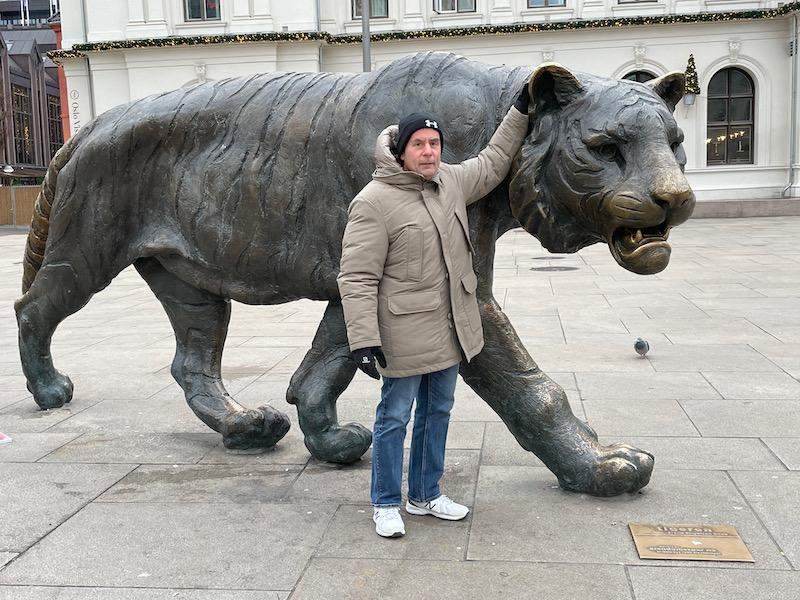
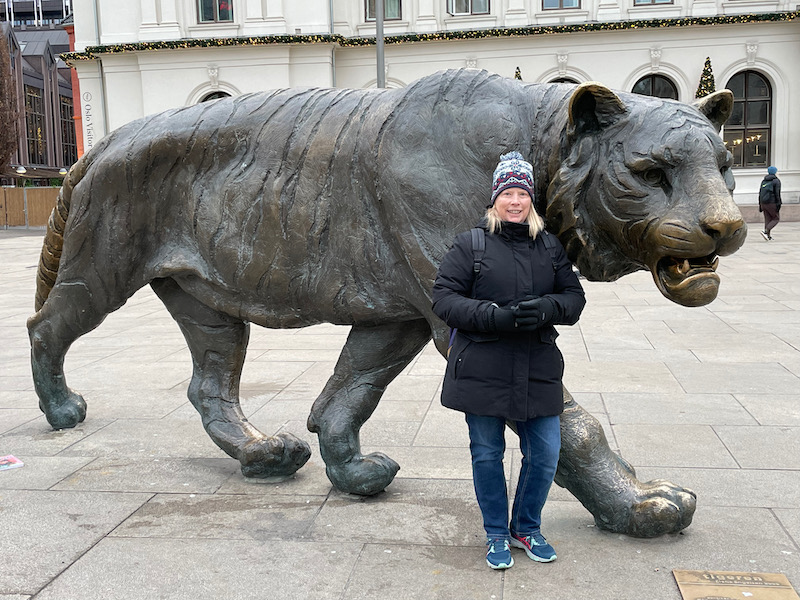
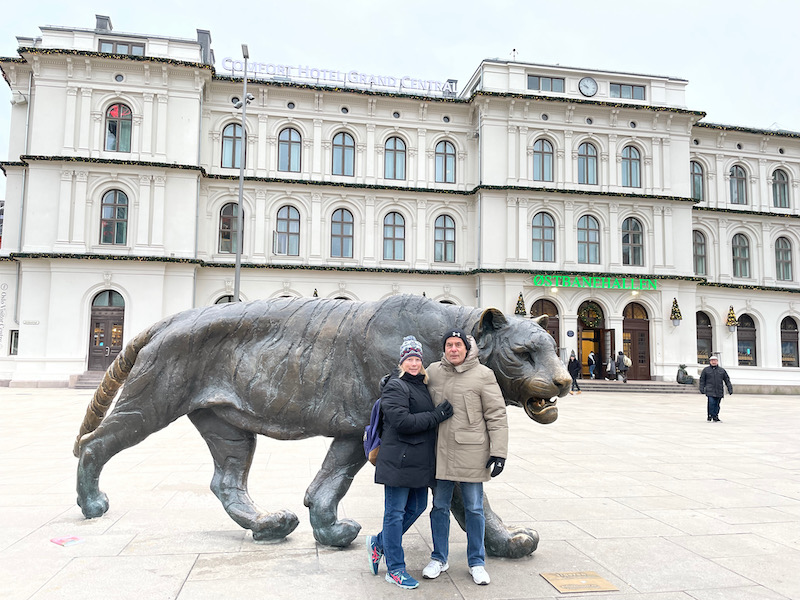
Here is the artwork "She Lies", taken at various times. You may wonder why I mention the time? Well, because it moves! It is made of stainless steel and glass panels and is attached to the floor of the Fjord, but it floats. Because of its floating nature, it rotates with the tide and winds. You can somewhat see that in the 2nd picture, it has turned around.
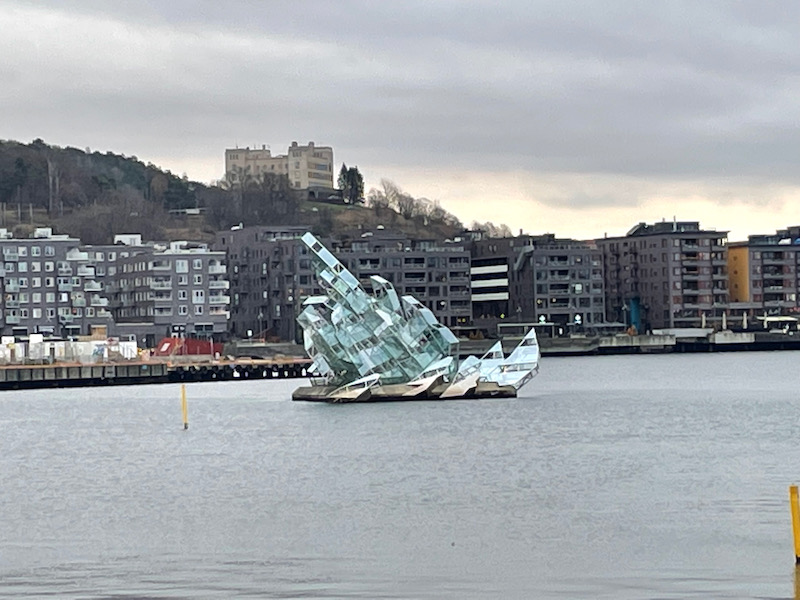
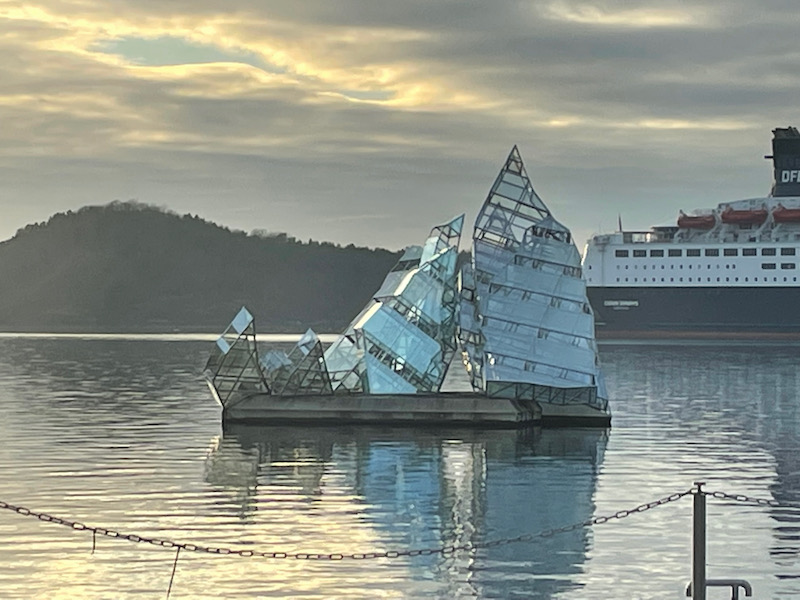
Oslo's original city hall from 1641 is the home of Gamle Raadhus Restaurant where food has been served since 1856.
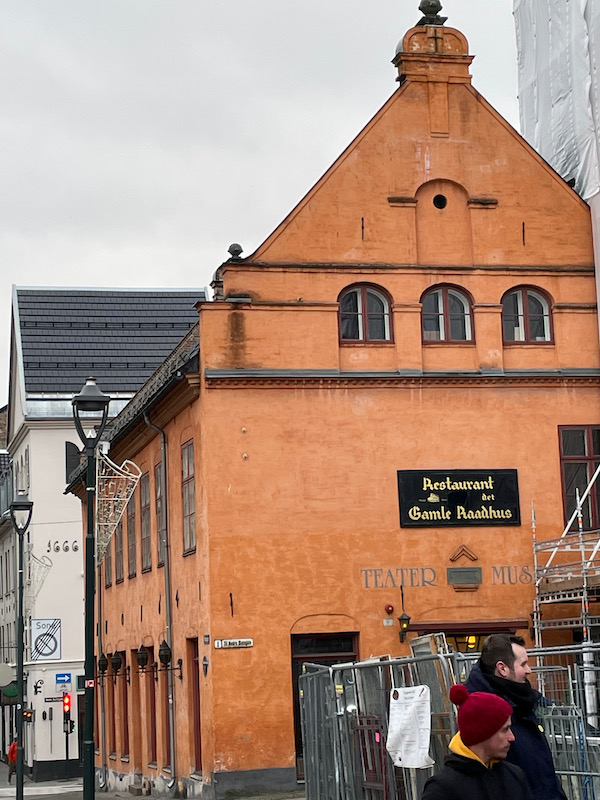
In the square with the original city hall is this statue, which shows the gloved hand of Christian IV. After the fire in 1624, the Danish-Norwegian King Christian IV decided to rebuild the town in this area and name it after himself (Christiana). Legend has it that he pointed to this spot and said: “The new town will lie here!”. Now there is a fountain in the shape of a gloved hand pointing to the ground making the spot.
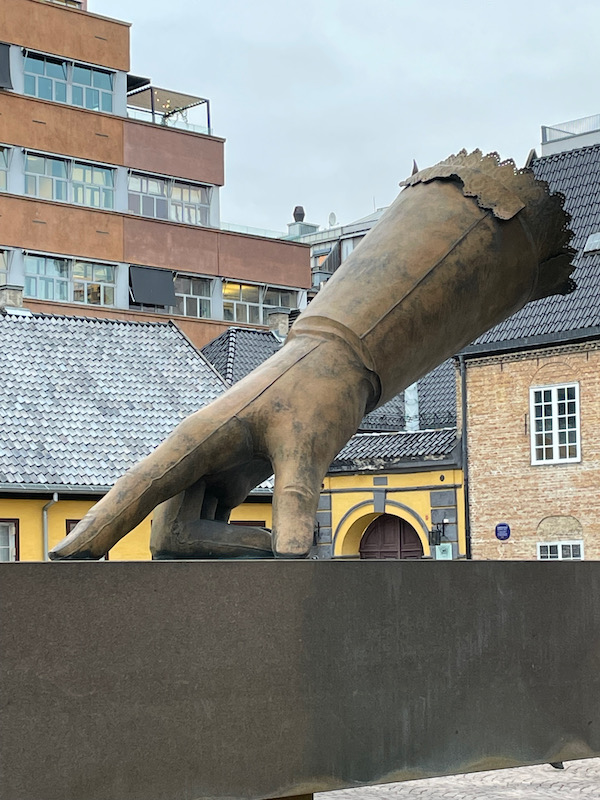
There are several little ports on the Fjord that have sailing ships docked. This is also one of the points where you can go on a boat tour of the fjord as well as a few islands.
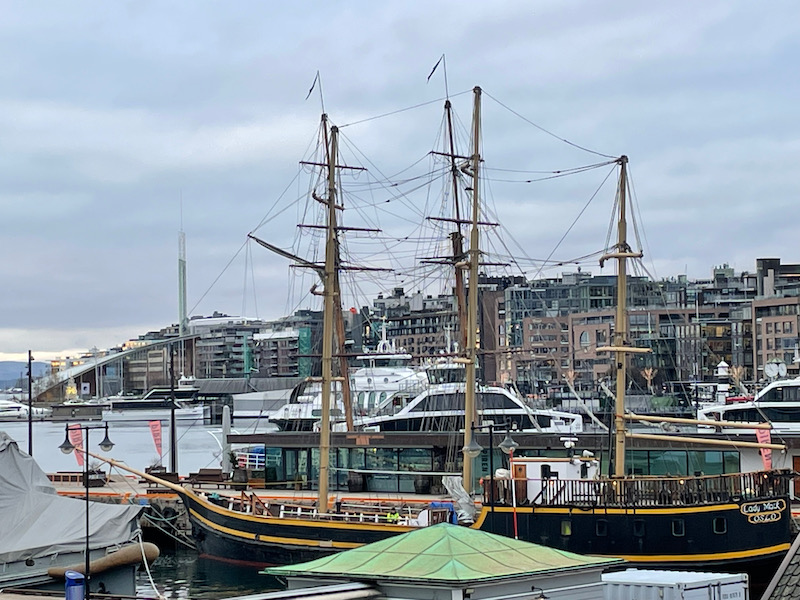
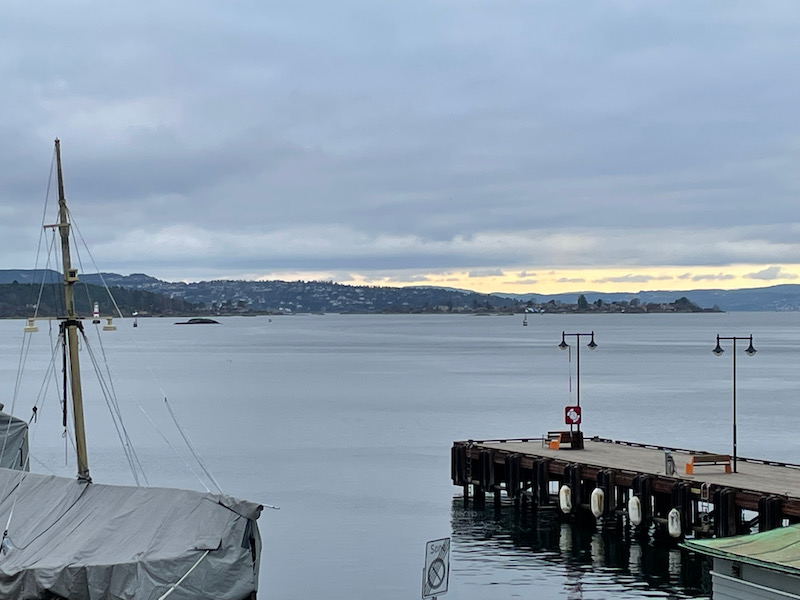
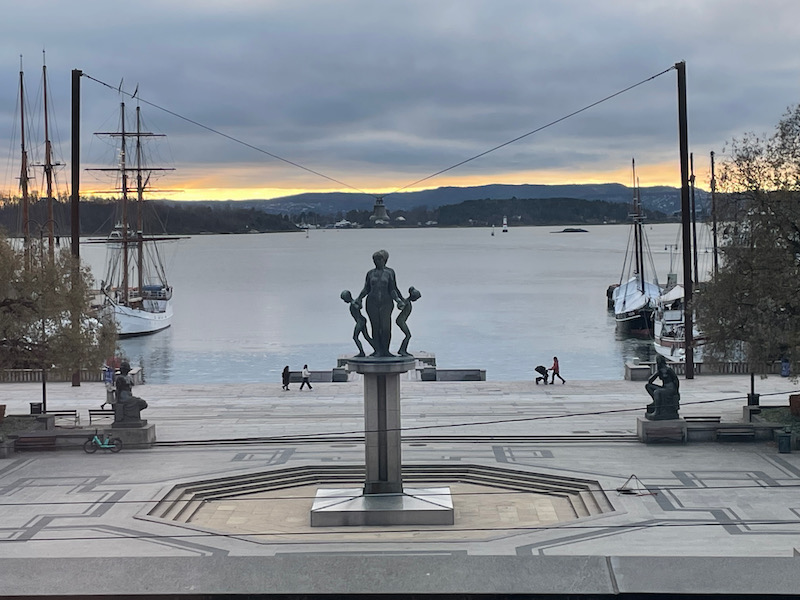
There is a statue of Franklin D. Roosevelt just left of the harbor. The statue may seem a bit out of place in Oslo but it turns out he was a gift to commemorate the assistance the US provided during WWII. The second statue is that of Peter Wessel Tordenskiold, in military dress next to a cannon. In 1716, he won a major battle by destroying the supply fleet of King Karl XII of Sweden, which forced him to give up on his first attempt to conquer Norway.
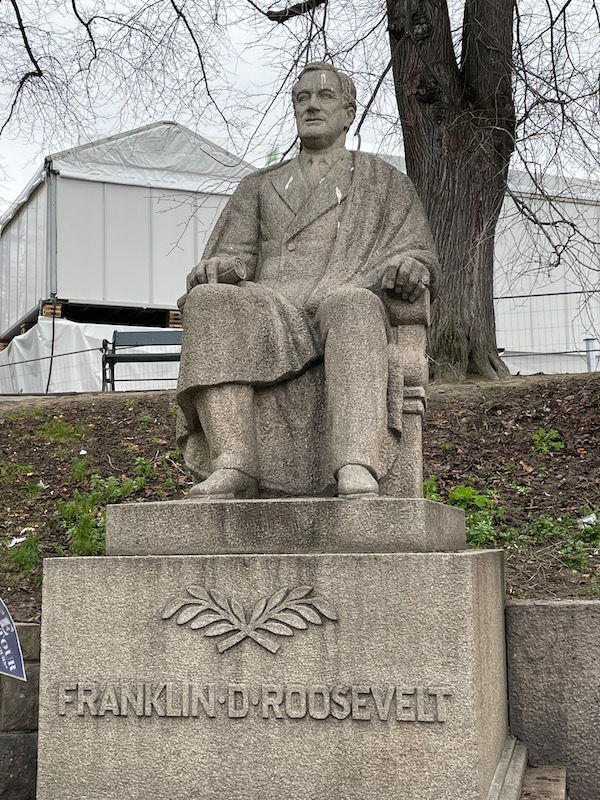
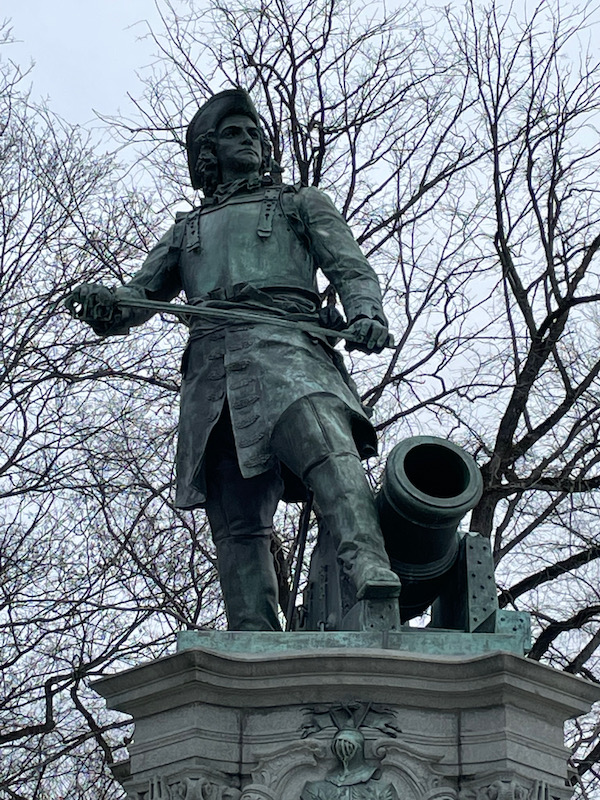
Since 1901, the Nobel Peace Prize has been awarded in Oslo. The Nobel Peace Center is located in a converted 1872 train station. Here they have exhibits, events, education programs, and guided tours that depict stores about the life of Alfred Nobel, the Peace Prize, and the Peace Prize laureates.
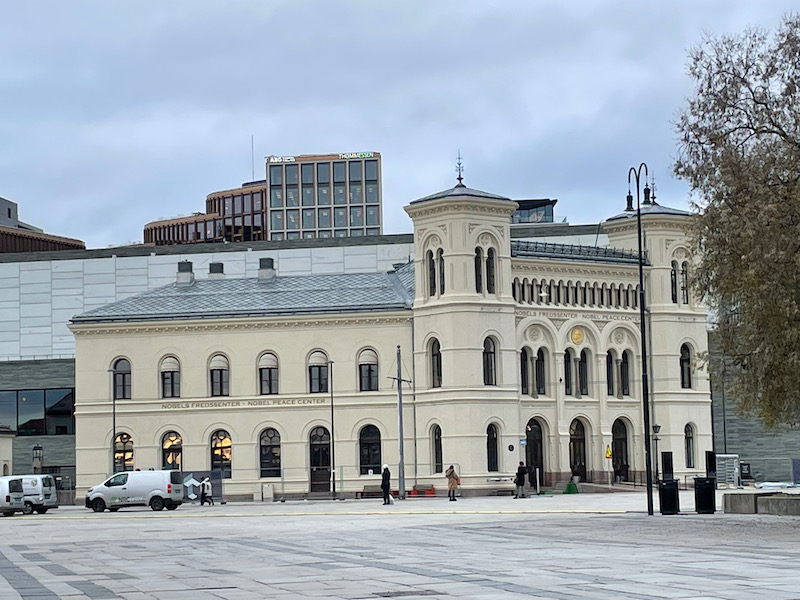
The Storting building is the home of the Norwegian Parliament, and it was completed in 1866. The building is built in yellow brick and light gray granite. It is a combination of several styles, including inspirations from France and Italy. A characteristic feature of the building is how the debate chamber is located in the semi-circular section in the front of the building, as opposed to the building's centre. Although it was not open to the public during our visit, they have a virtual guided tour on their website.
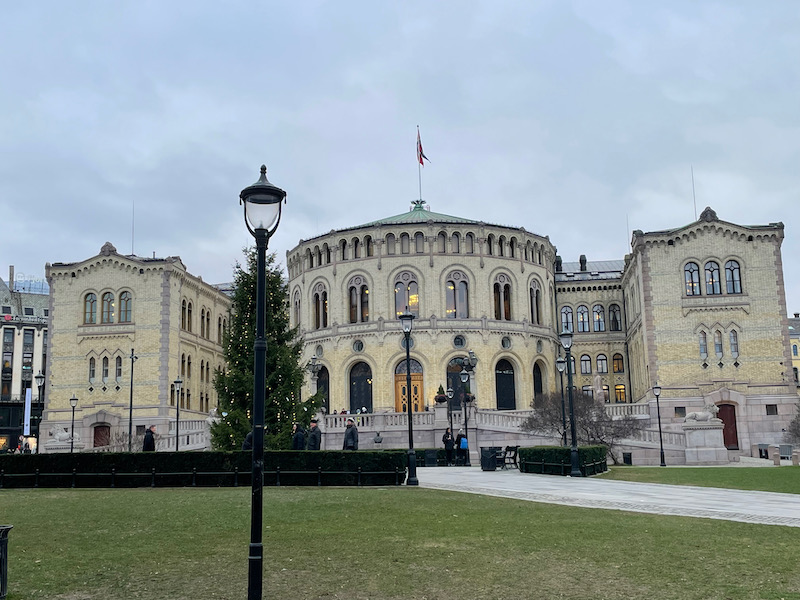
Just outside of the theater was this little ice sculpture.
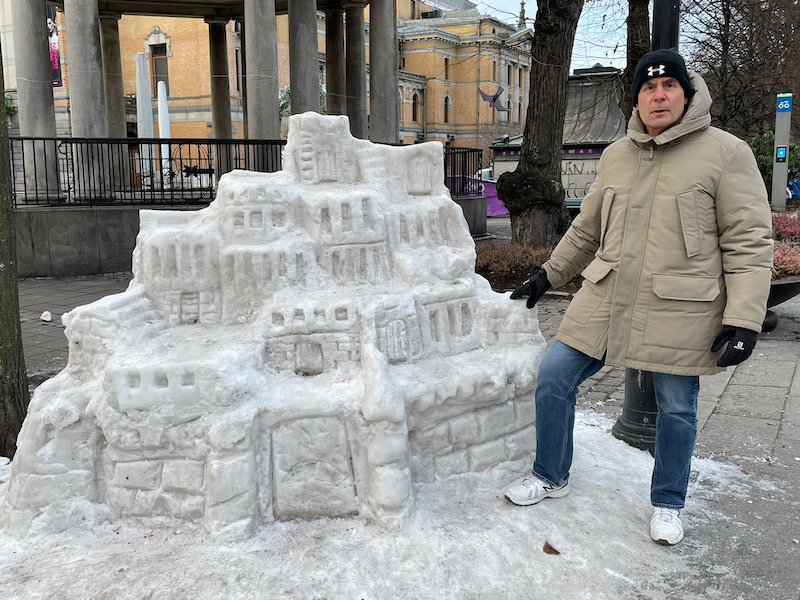
The City Hall of Oslo, the Oslo rådhus, was built between 1931 and 1950 with an interruption during World War II. It has two large towers, one of which contains 49 bells which are played by a real person. Sometimes it is just bells ringing, but sometimes, she plays known songs, like the Harry Potter theme or Christmas carols. We walked around from the port-side and found a sculpture of Harald Hardråde on horseback. There are also multicolored reliefs that depict motifs from the Poetic Edda and sculptures depicting the craftsmen who built the building.
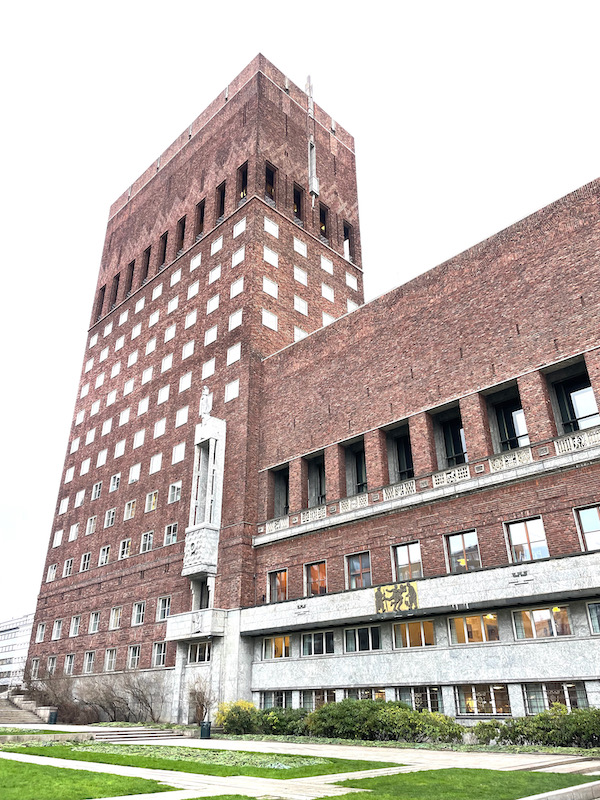
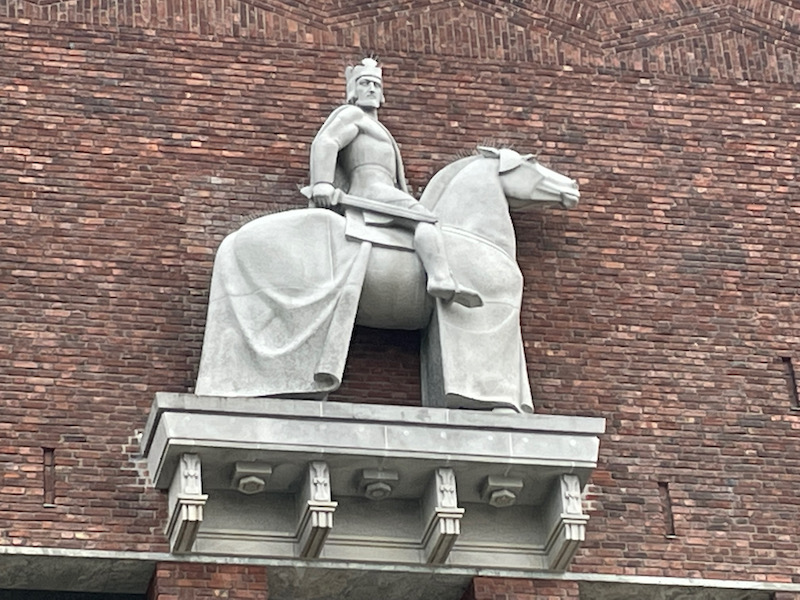
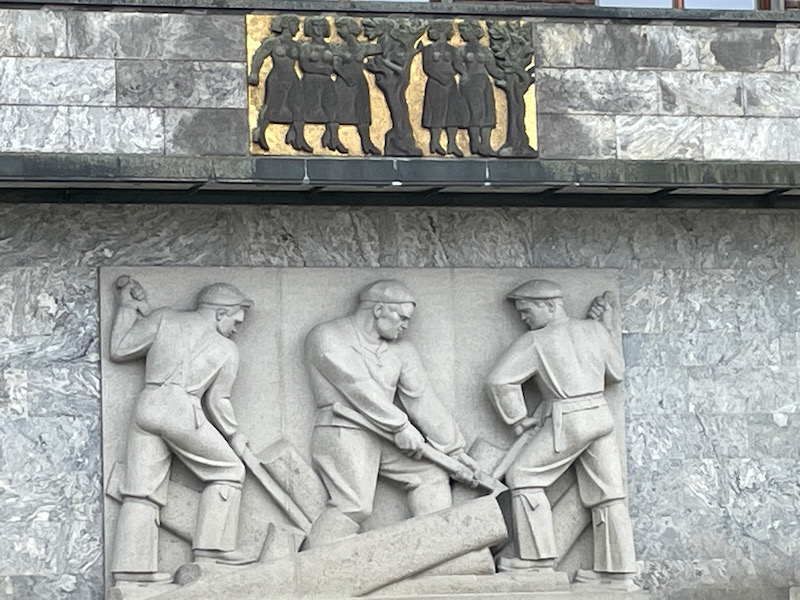
The front of the building has a really nice clock on one side and a golden statue called Oslopike ("Oslo girl") up on the top. Above the door is a nice bronze relief that seems to show local townspeople.
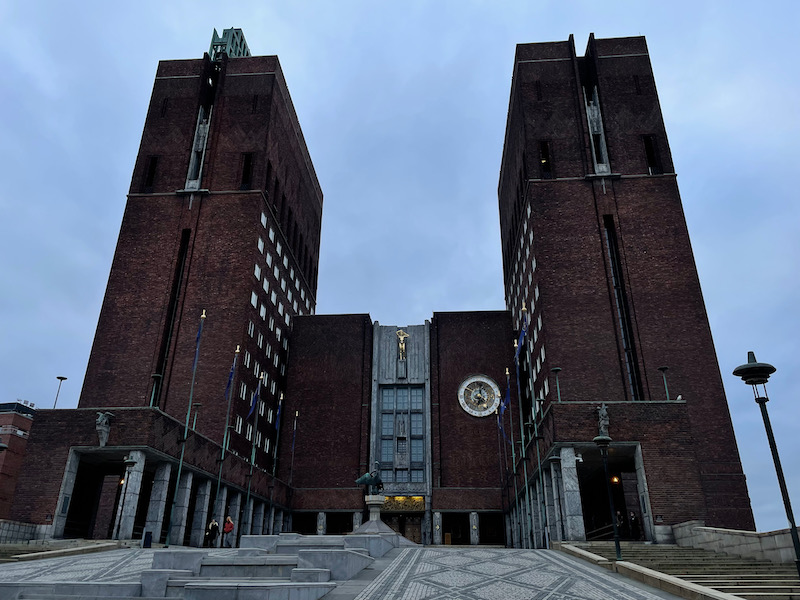
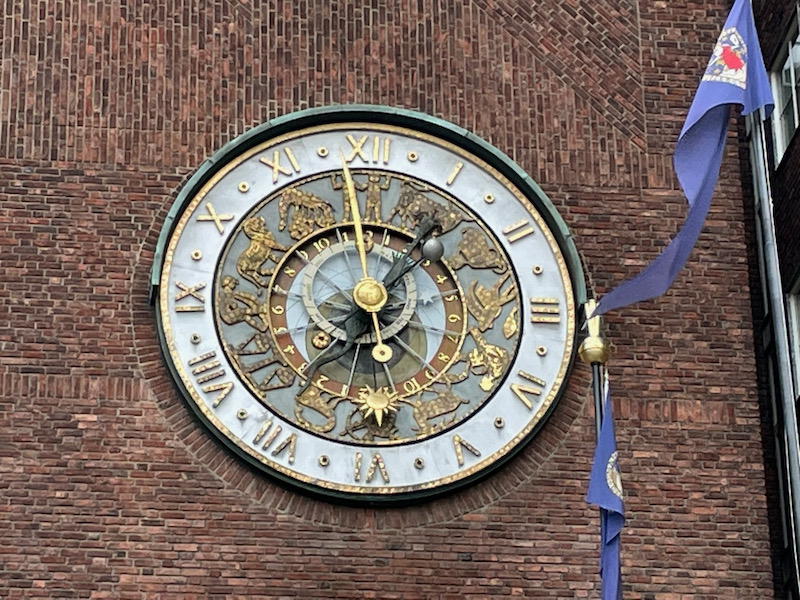
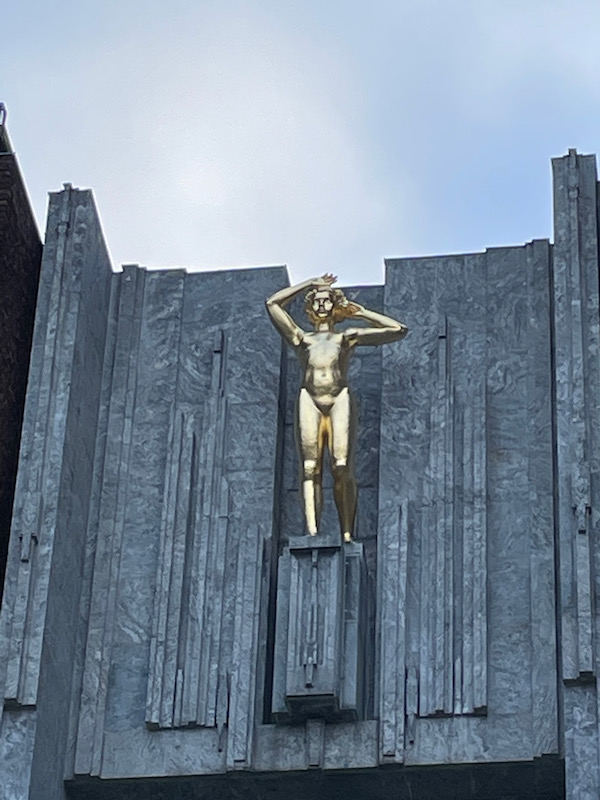
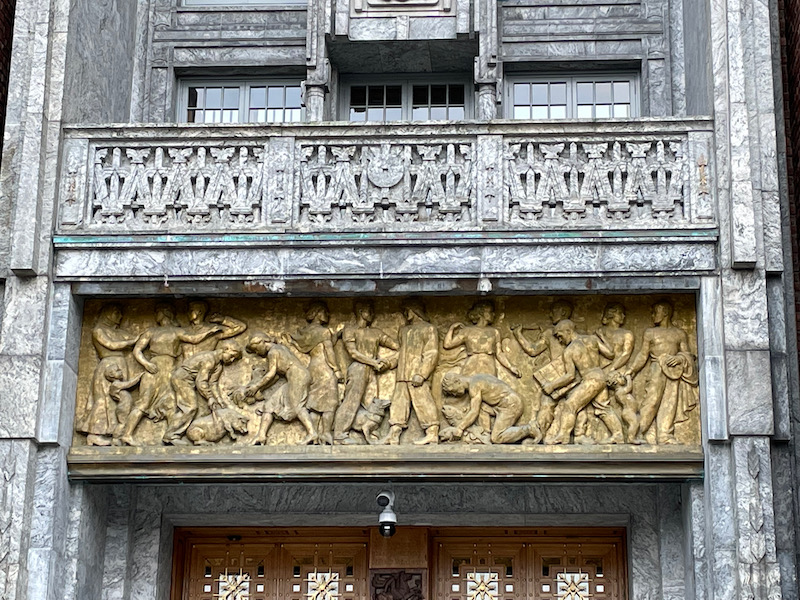
The main hall is huge! The floor and parts of the walls are clad in marble. The room has a series of wall paintings depicting Norway and Oslo between the wars and also during occupation. They also depict the growth of commercial activity in the city, including the rise of the labour movement. Various monarchs and the city's patron saint, St. Hallvard are also depicted.
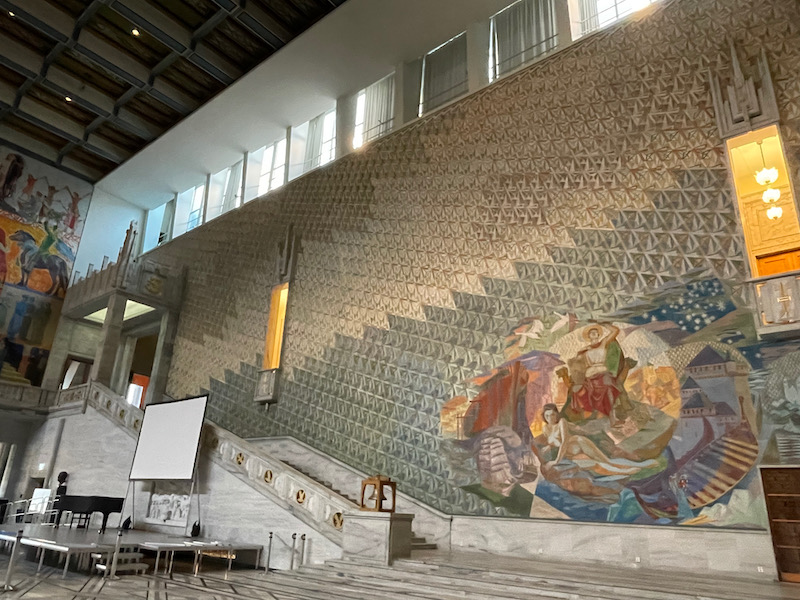
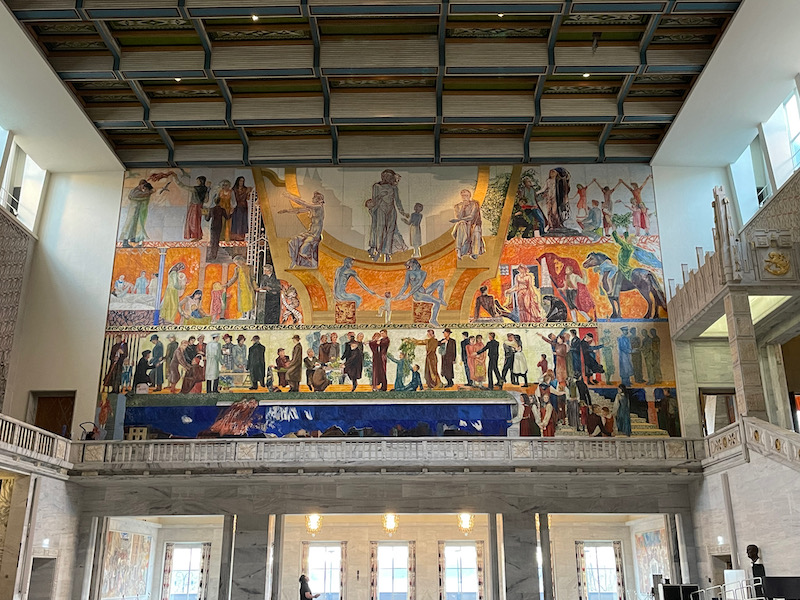
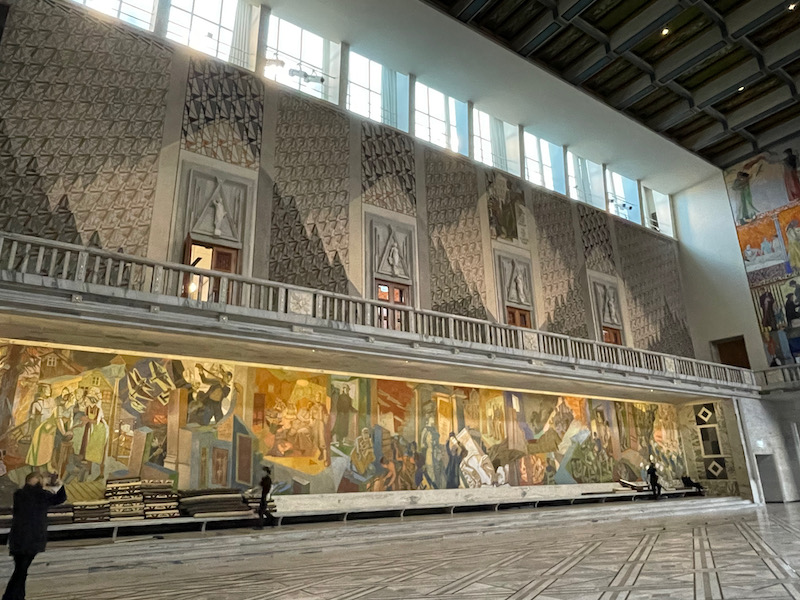
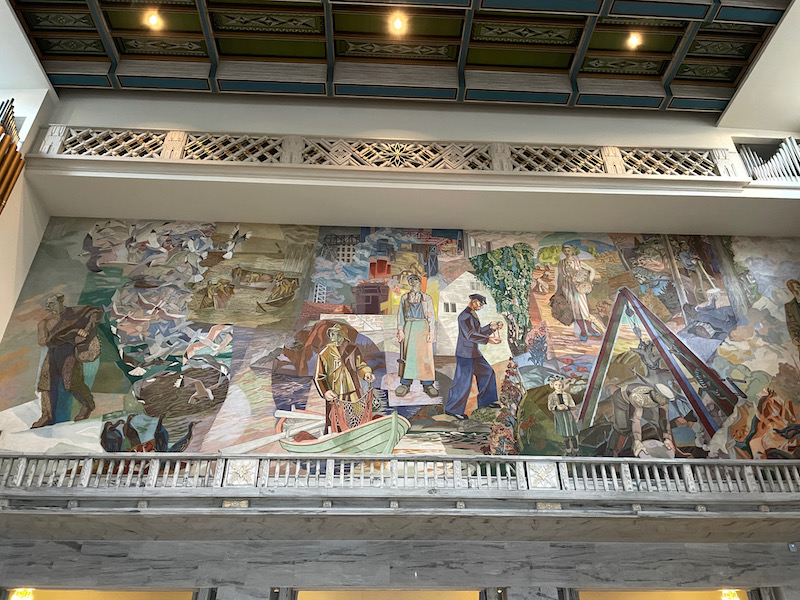
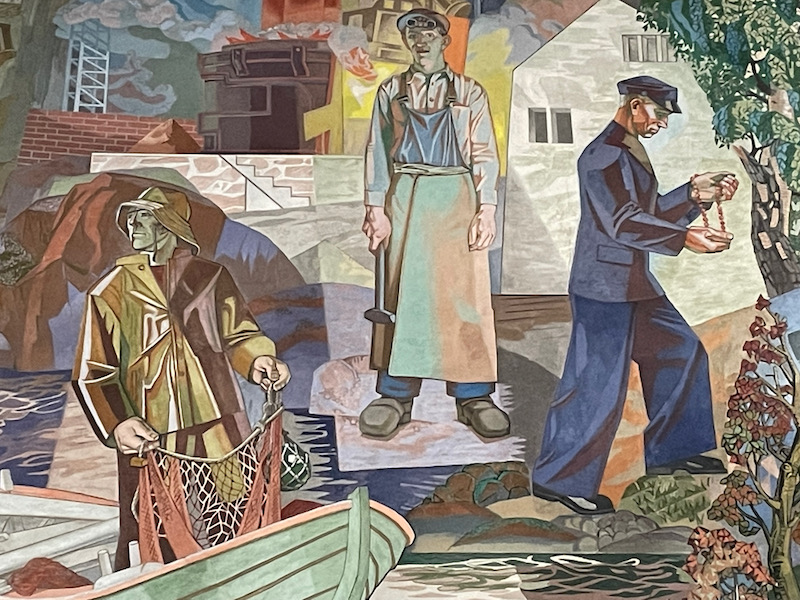
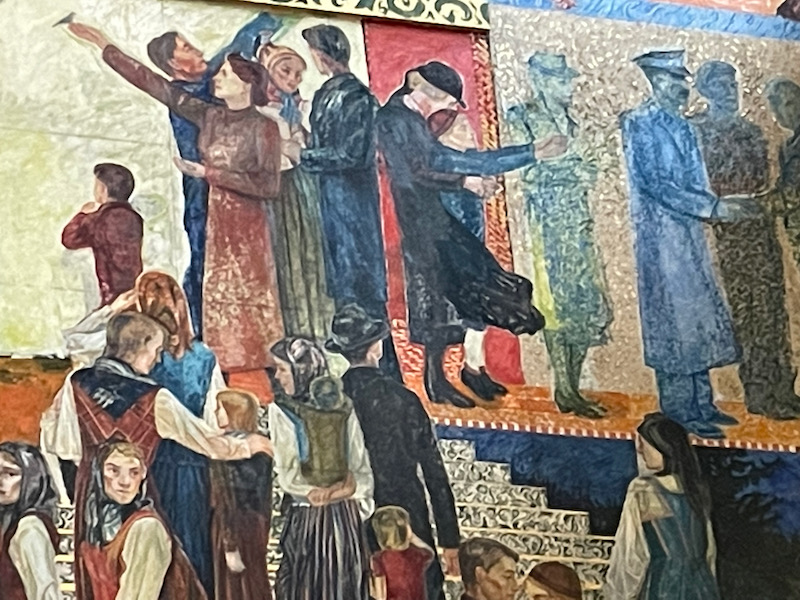
Details of one, which shows the legend of Saint Hallvard, the city's patron saint. You can find this story in various places, including manhole covers, and it always has a man holding arrows, a woman, and a millstone. The story goes that back in 1043, Hallvard Vebjørnsson was preparing to row his boat across the fjord when a young pregnant woman came up and begged him to take her with him, saying that 3 men were chasing her. They accused her of stealing things from a house, which she denied. He believed her and they started across the fjord. The men arrived and when he wouldn't return to the shore, they shot arrows at him, hitting him in the neck and killing him. They tried to cover up the murders; they killed the woman and buried her near the shore, and tied a millstone around Hallvards neck and tossed him in the fjord. A few days later, his body floated up, even though the millstone was still attached.
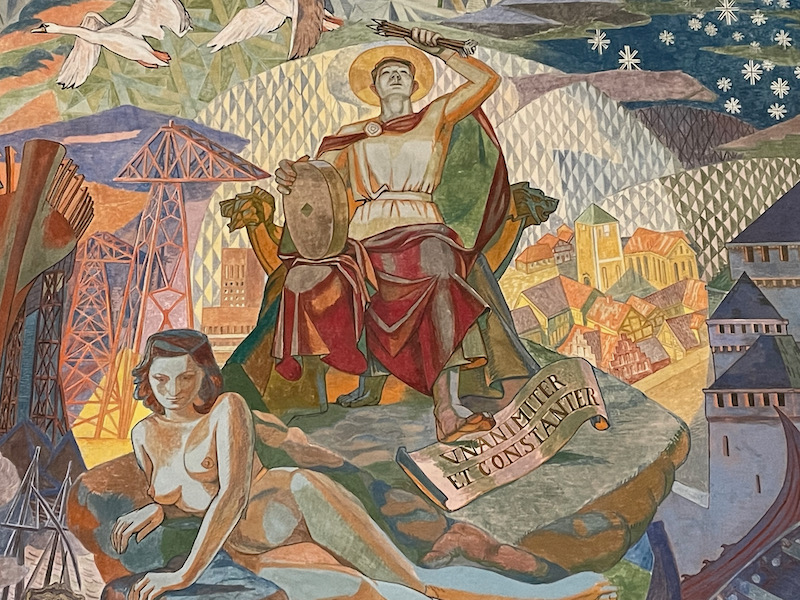
The Royal Palace was completed in 1849 and is the residence of the King Harald V and Queen Sonja. The Crown Prince Haakon and his family live about 12 miles away at an estate that was used between 1957 and 1991 by King Olav V and then from 1991 to 2001 while the Royal Palace was being modernized by King Harald V. On the palace square is a statue of King Charles XIV John on horseback. He was king from 1818 to 1844 and was the first monarch of the Bernadotte dynasty. He had chosen the site for the palace and laid the foundation stone of the chapel, which was consecrated in 1844. Unfortunately, he died before the palace itself was completed and the first residents were his son Oscar I and queen Josephine. If you visit in the summer, you can take a guided tour of the Royal Palace (late June to mid August).
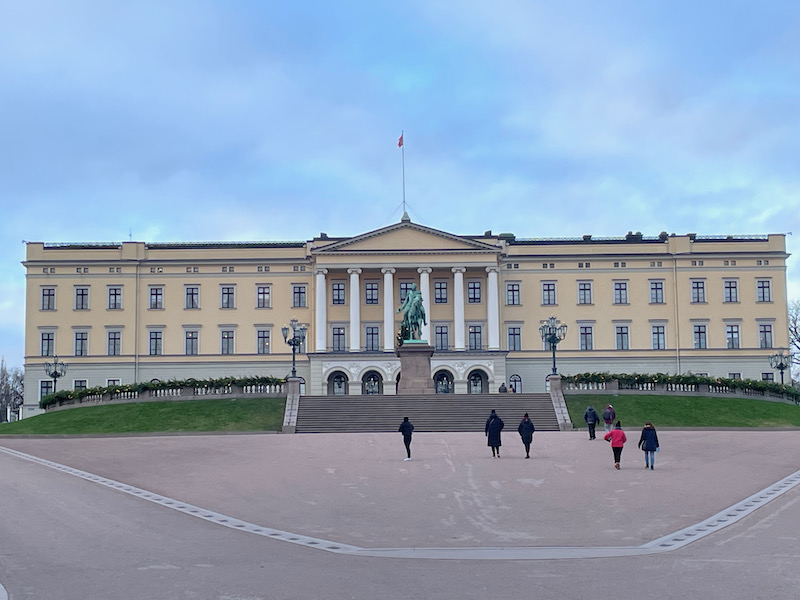
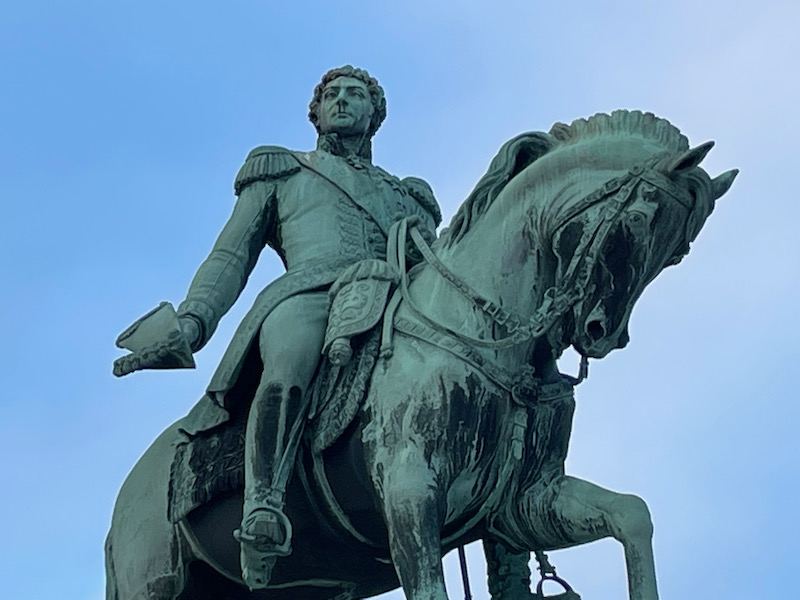
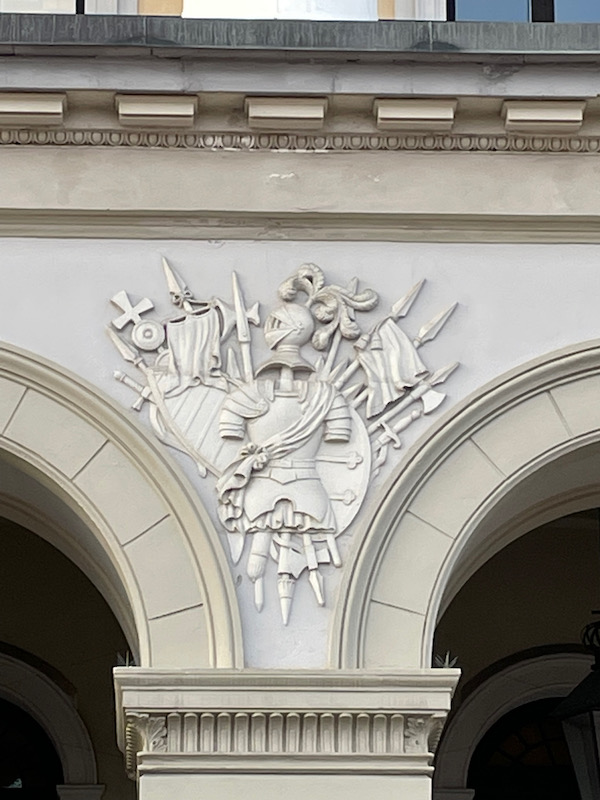
Every day at 1:30pm, you can stop by and watch the Changing of the Guards. Mind you, this is not as impressive as the Changing of the Guards at Buckingham Palace. I didn't quite understand all of the pieces, and I ended up taking several videos since there was a bit of delay between anything interesting, where the guards just stood there. But hopefully you will appreciate these....
First, a set of guards come out of the guardhouse and line up.
Then, a more guards march across from the other side and end up standing face to face with them. There are several columns of guards that then file into the guardhouse.
Then the remaining guards move to a single line.
Another small group comes out of the guardhouse and the groups do a variety of movements around. Finally, a set of new guards seems to march by and will take turns relieving the guards that have been at various little guardhouses. In this one, you can see 3 people break off and head to the first guard shack. Mind you ... I have no idea what happens after this since it was just taking WAY too long and I didn't want to continue watching :-)
The Cathedral, the Oslo domkirke, dates from 1697 and was restored in 1950. It is still used for Royal events, including the wedding of Prince Haakon, and Princess Mette-Marit Tjessem Høiby in 2001. The bronze doors were done in 1938 and the various sections are taken from the Beatitudes in the Sermon on the Mount. There are 4 fields on each side and a curved field at the top. In the top field, Jesus stands surrounded by flowers and birds. On the left are shown "The pure in heart", "The merciful", "Those who mourn" and "The persecuted".
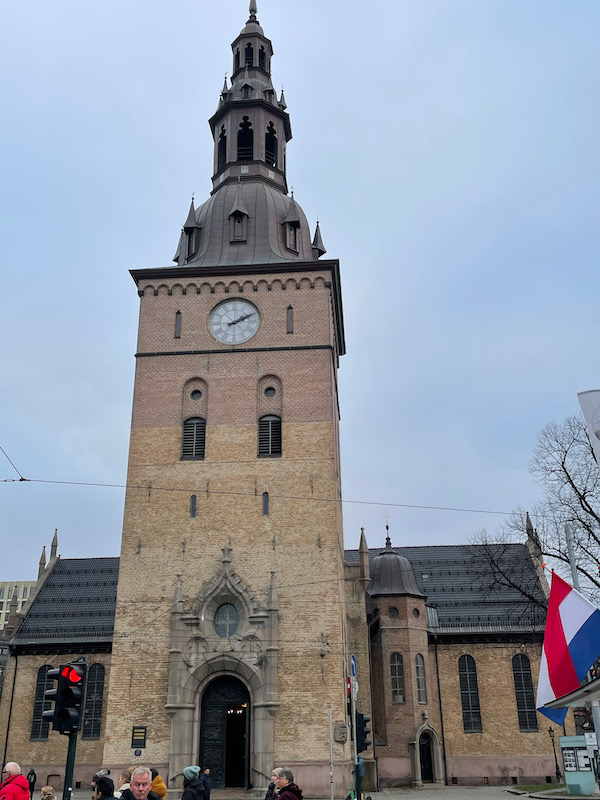
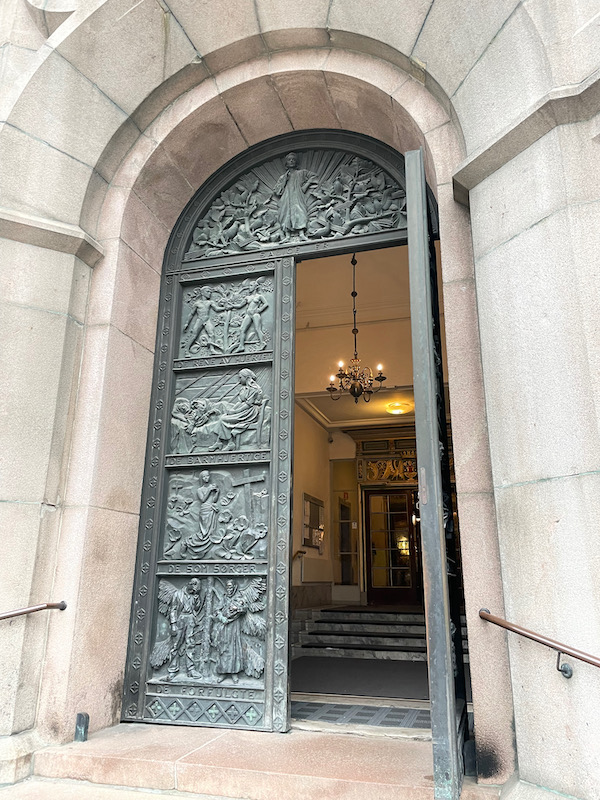
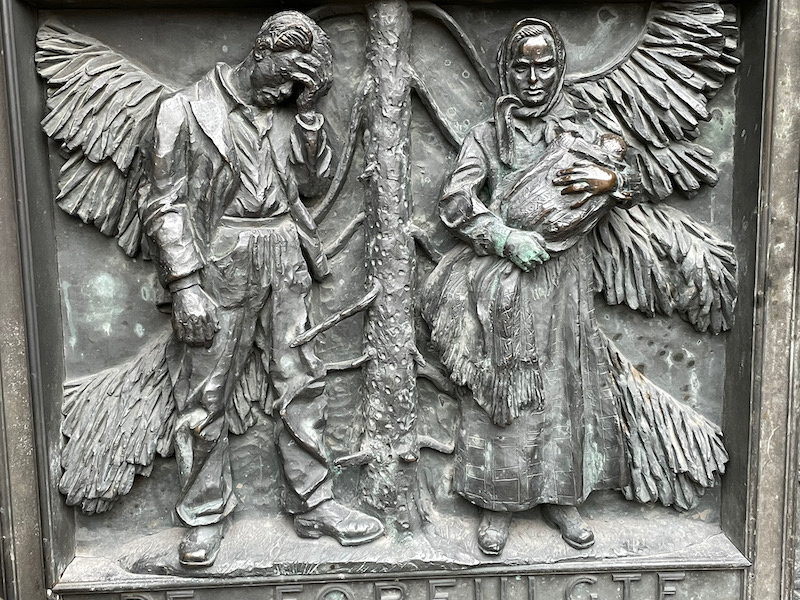
The inside is interesting in that it feels like it is the same dimensions up-and-down vs side-to-side. There are a few very interesting things, including the royal chair (2nd picture) that has the monogram of King Haakon VII and the Baroque organ.
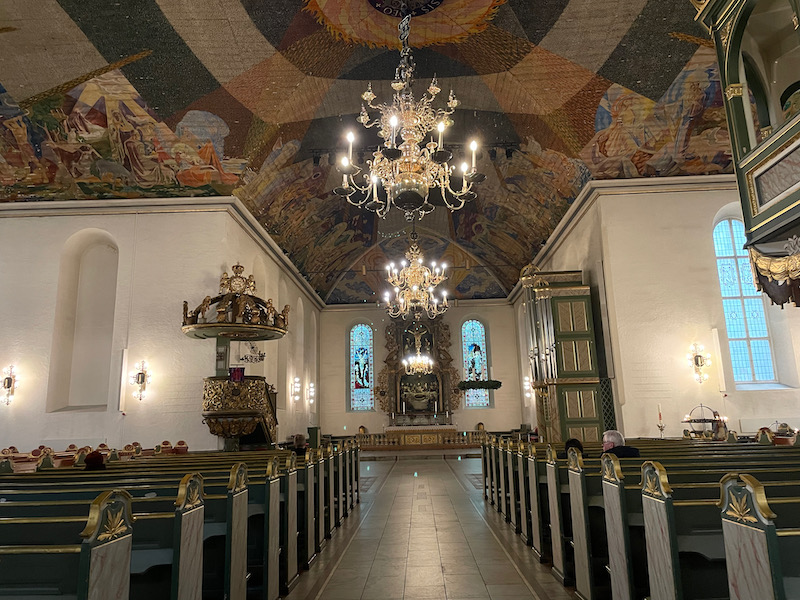
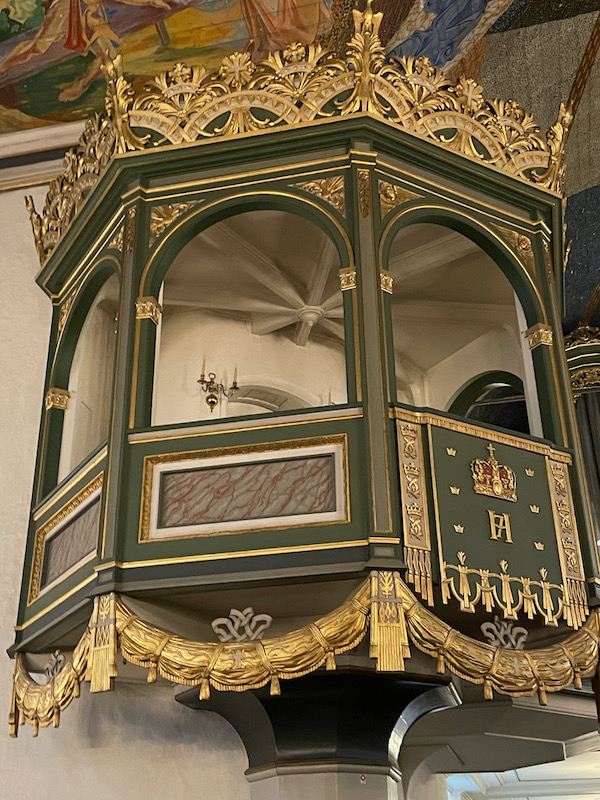
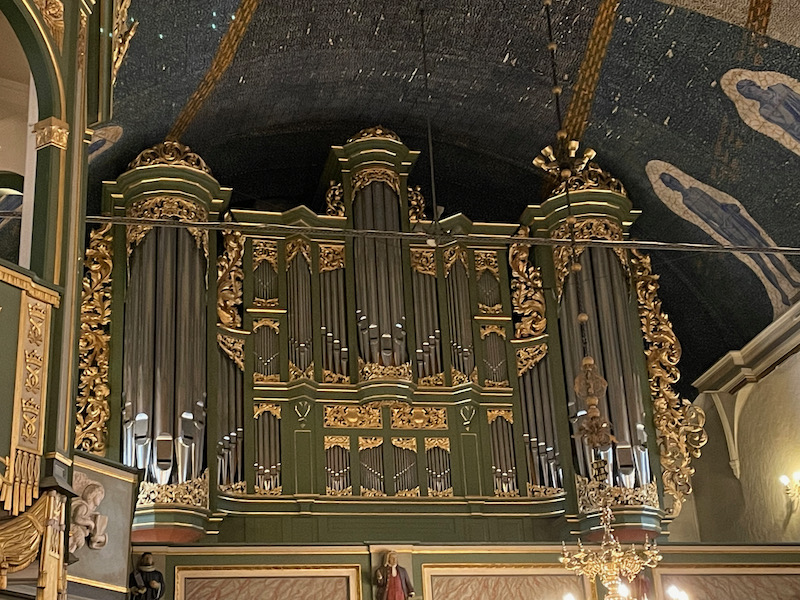
The painted ceilings are quite different in style from the furniture. These modernist ceiling paintings cover all four vaults and were done between 1936 and 1950. He used paint with an egg-oil base and during the war, he had to keep chickens himself to get eggs for his paint. The motifs are built over the three articles of faith, with a brilliant sun in the middle with the inscription Gloria in excelsis Deo – Glory be to God in the Highest.
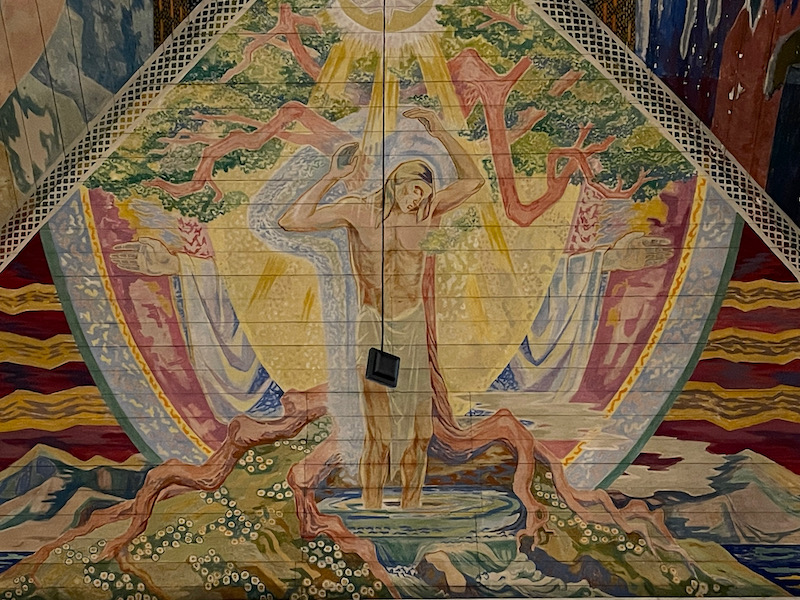
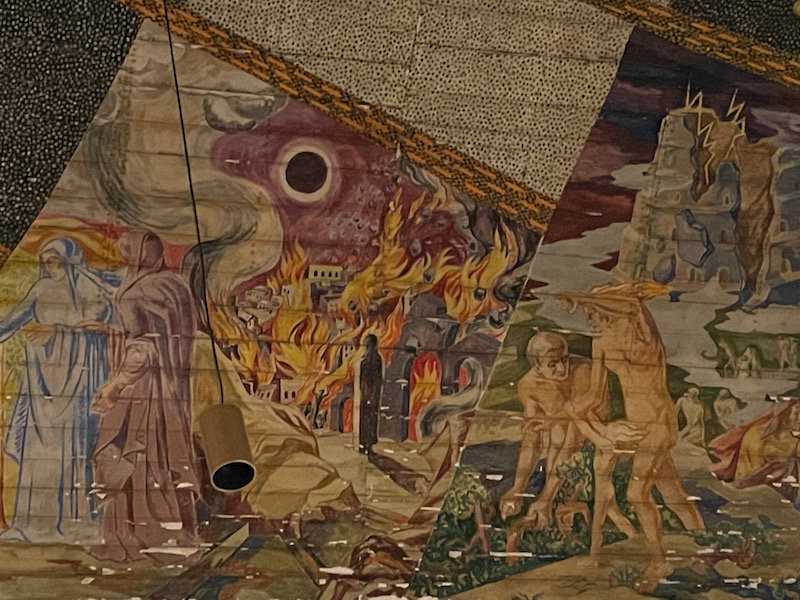
The baroque altarpiece was installed in the church in 1699. The altarpiece has 3 sections: the lower part showing the Last Supper, the middle shows Christ on the cross with Mary and John, and then the victorious Christ at the top. The Last Supper is three-dimensional, with Jesus and the apostles gathered around the table. Jesus sits on the long side at the back and on each side of him sit four disciples, a couple of the others sit at the ends of the table. Both the disciples and Jesus are dressed in green and brown robes decorated with collars and belts that are gilded. On the covered table are 12 gold plates and two candlesticks with lighted candles. The wine cup is just to the right of Jesus. In the middle of the table is the Easter lamb on an oval dish and on the tablecloth is bread. A chandelier with candles hangs above the table itself.
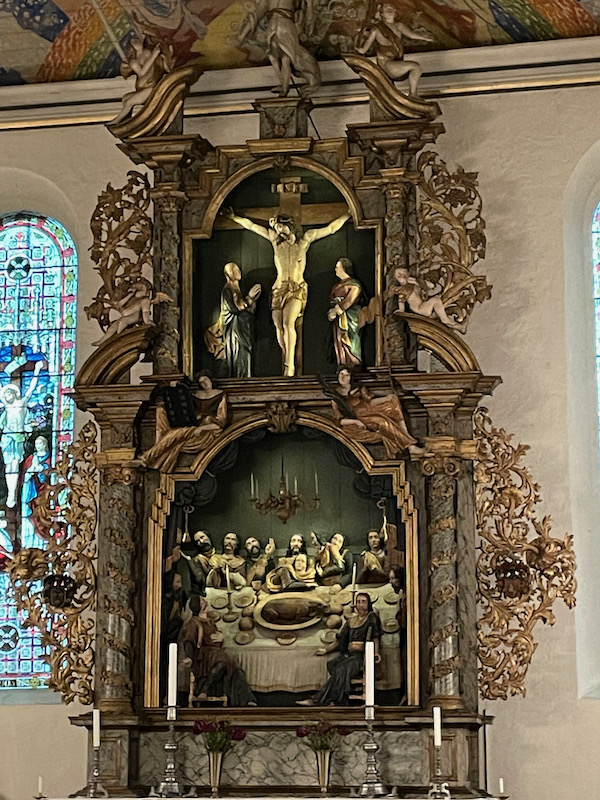
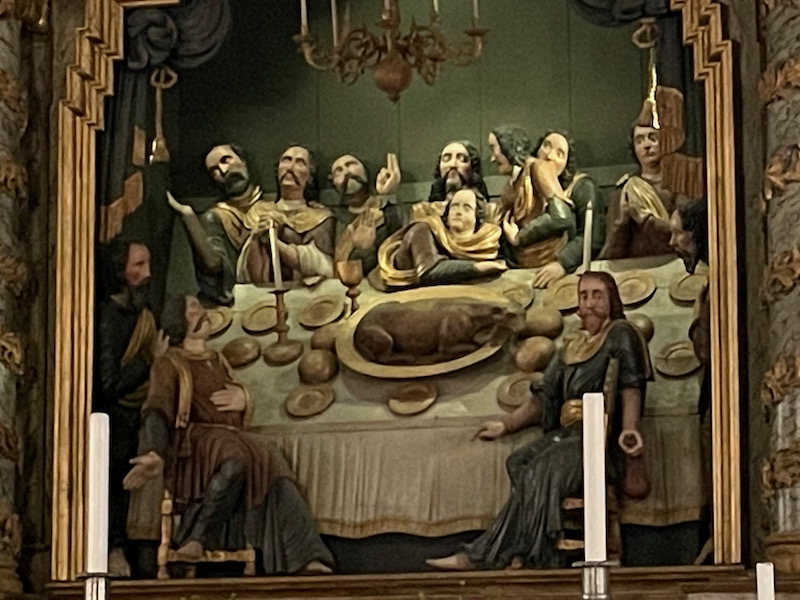
Akvavit is an important part of Nordic drinking culture, where it is often drunk during festive gatherings, such as Christmas dinners and the Midsummer celebration, and as an aperitif. It is distilled from grain or potatoes and is flavored with caraway or dill (or both).
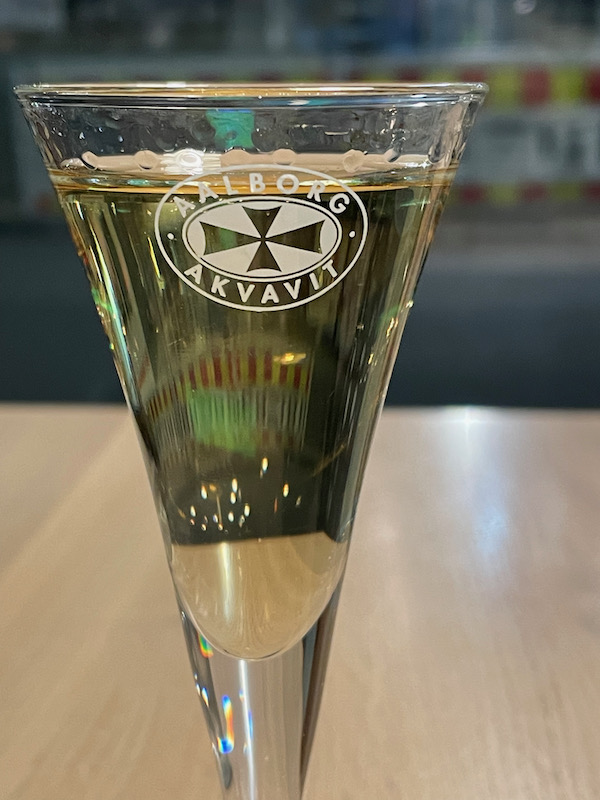
Unlike the Toulouse opera theater, which was created in the early 1800s, the Oslo Opera House was completed in 2007. Not only is it very modern outside, this custom-built center has 3 stages, ballet and symphony practice rooms, but also rooms for sewing of costumes, making hats, fixing shoes, etc. The angled exterior surfaces of the building are covered with marble from Carrara, Italy and white granite and make it appear to rise from the water.
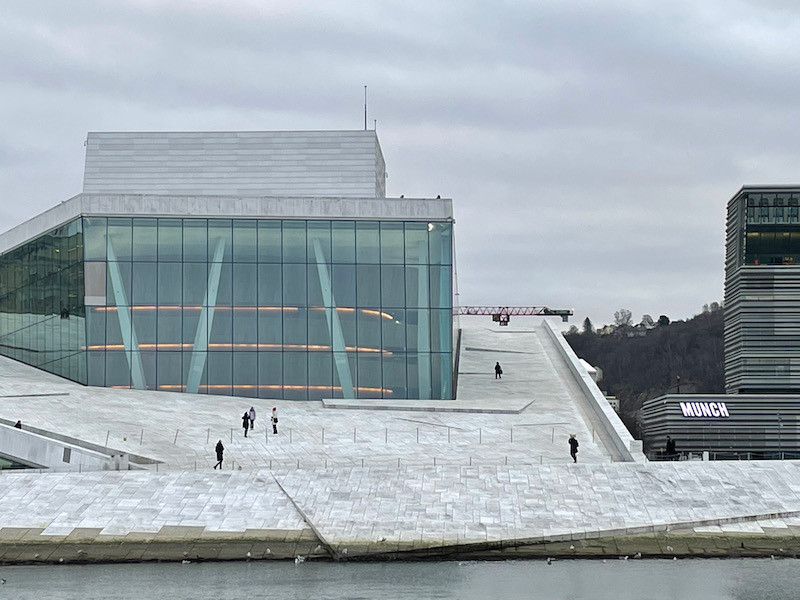
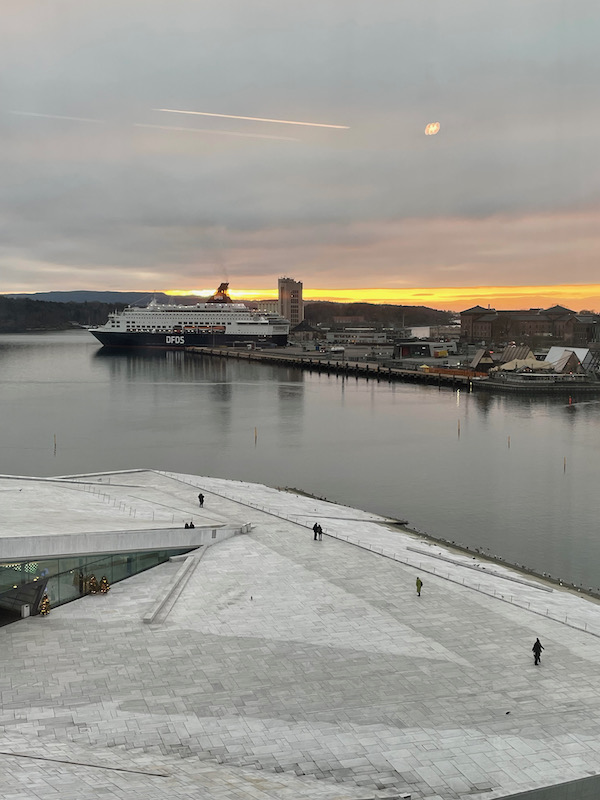
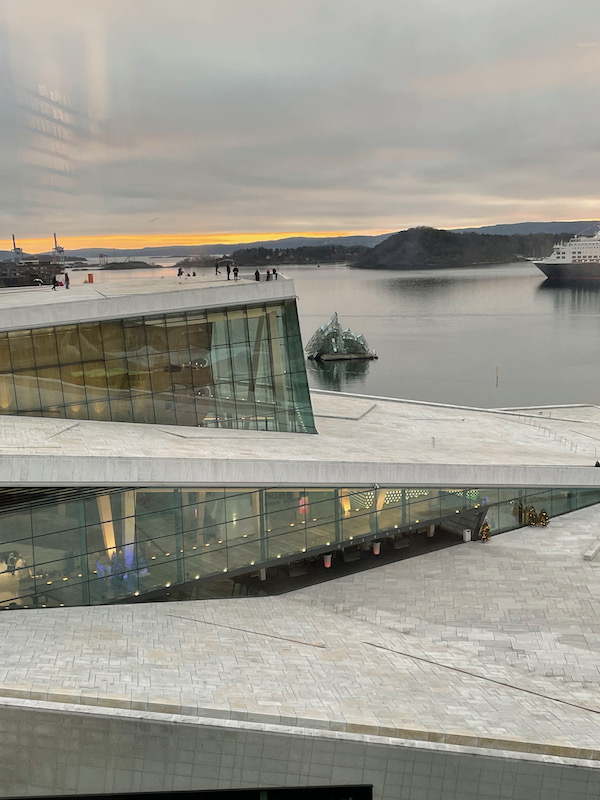
The interior has lots of light-colored oak to bring warmth to the space in contrast to the coolness of the white exterior. The main auditorium is a horseshoe shape and illuminated by an oval chandelier containing 5,800 handmade crystals. There are quite a few places to sit and relax, and it was designed to allow people to just come in (during opening hours) and relax. The lobby is surrounded by glass windows that are almost 50 feet tall, giving an amazing view of the water.
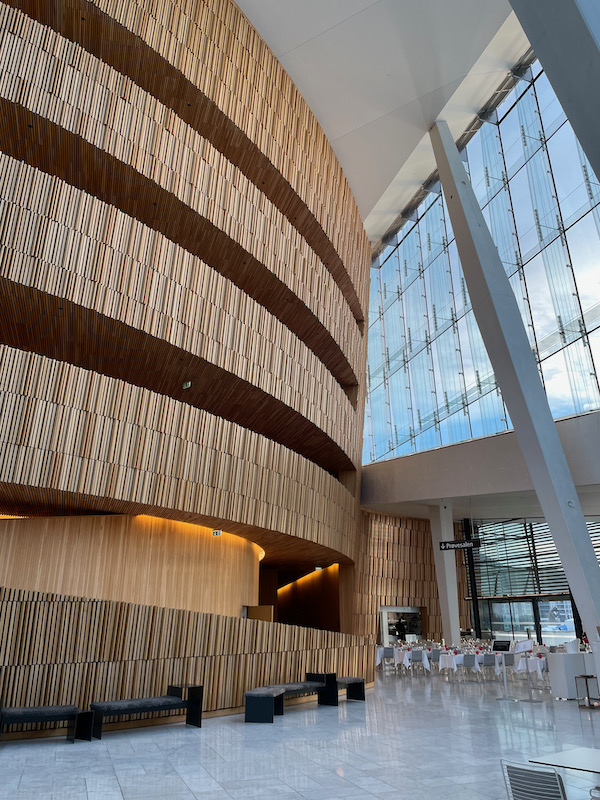
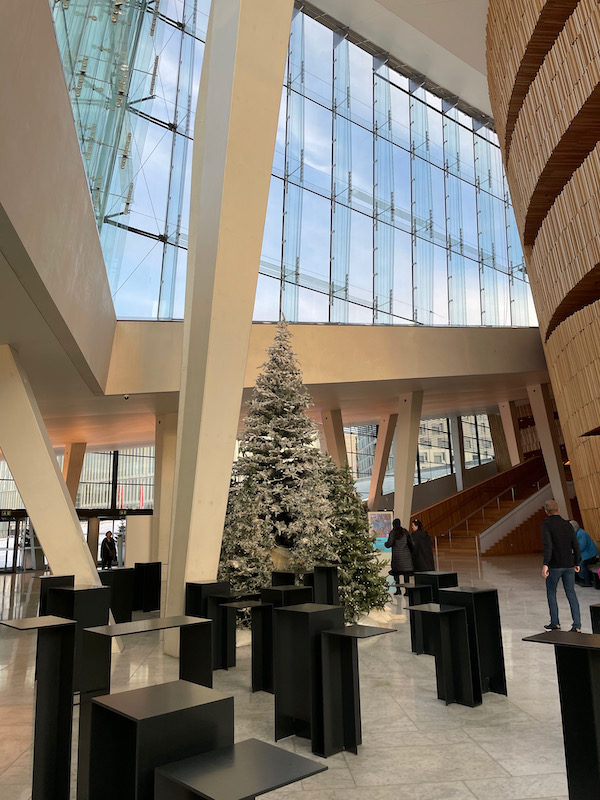
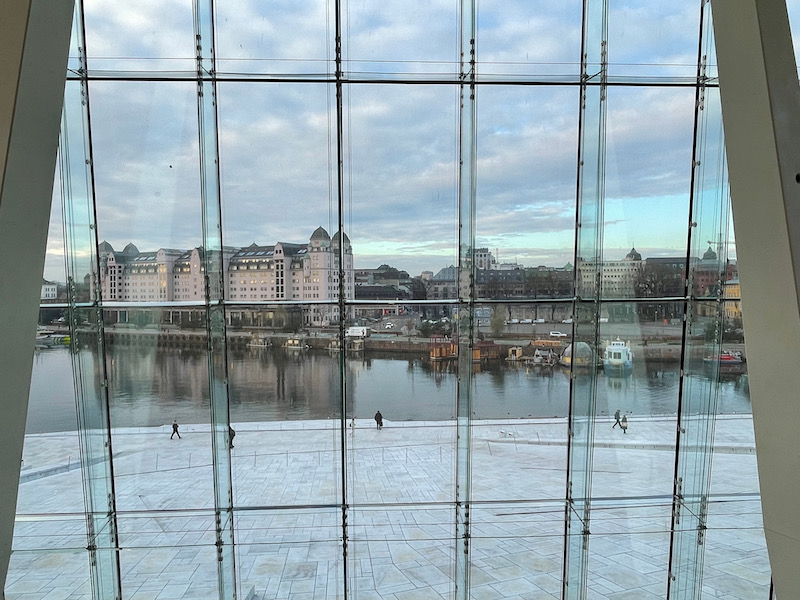
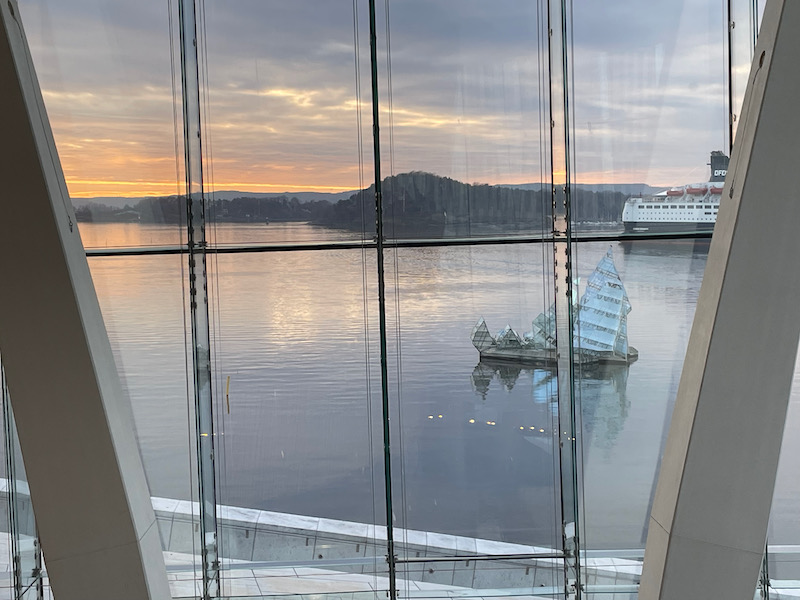
This is a painting of (I think) Kirsten Flagstad, a Norwegian soprano who is one of the most famous opera singers from Norway. Unfortunately, there wasn't a Norwegian opera during most of her career, but she toured extensively in the US, Europe, Australia and South America. After World War II, she was instrumental in the creation of the Norwegian National Opera and she was the first director until her death.
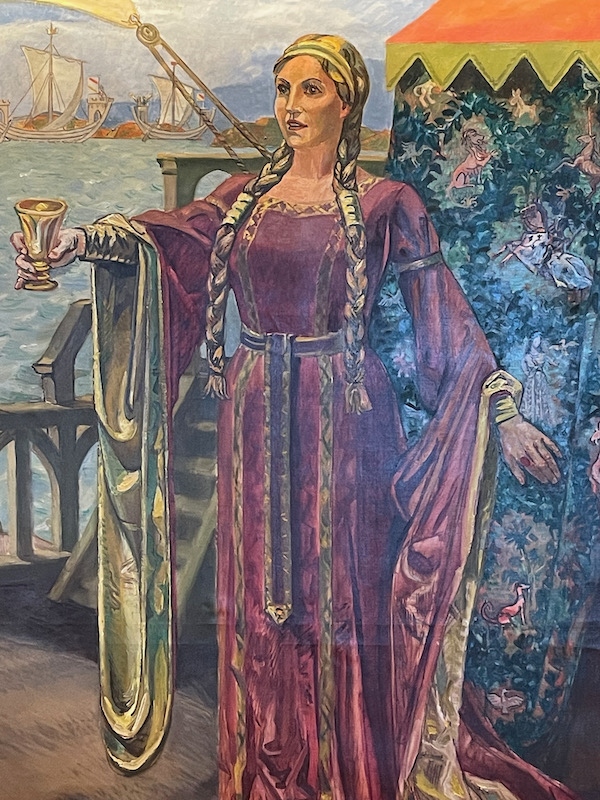
I wasn't able to take pictures of the stage, as the workers were setting up for a production that evening. But you can see the different levels and seats. This is the same type of wood as in the lobby, but stained a darker color for the stage area. As this is a very modern building, each and every seat has a personal little screen in front where the person can select to get the "subtitles" for the opera (which is normally still done in the original language) in either Norwegian or English.
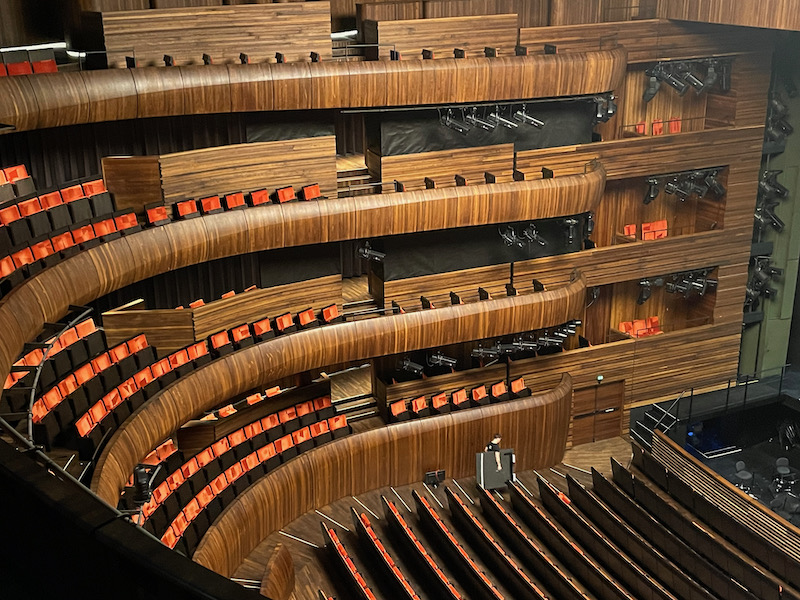
Here is a center courtyard (which she said was really needed to ensure natural light went into the various practice rooms and offices) where I tried to get a couple pictures to show the number of rooms that are hidden back behind the stages.
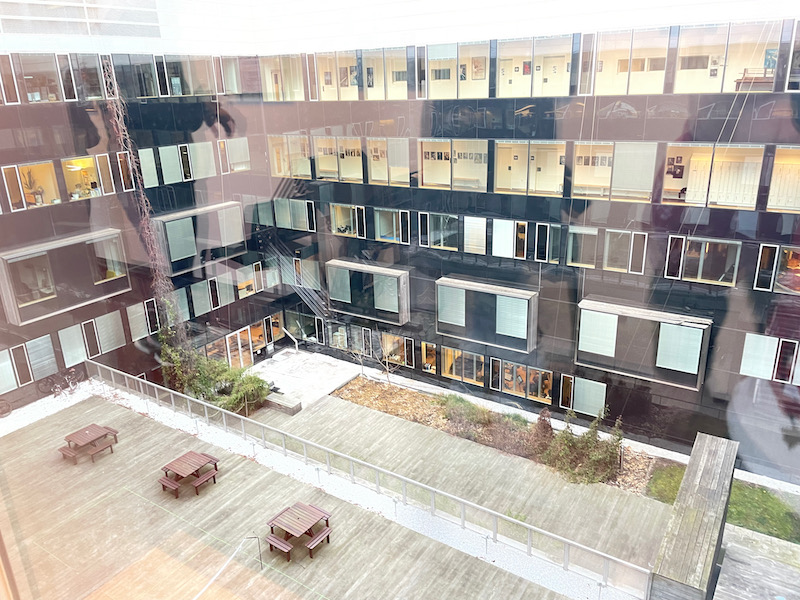
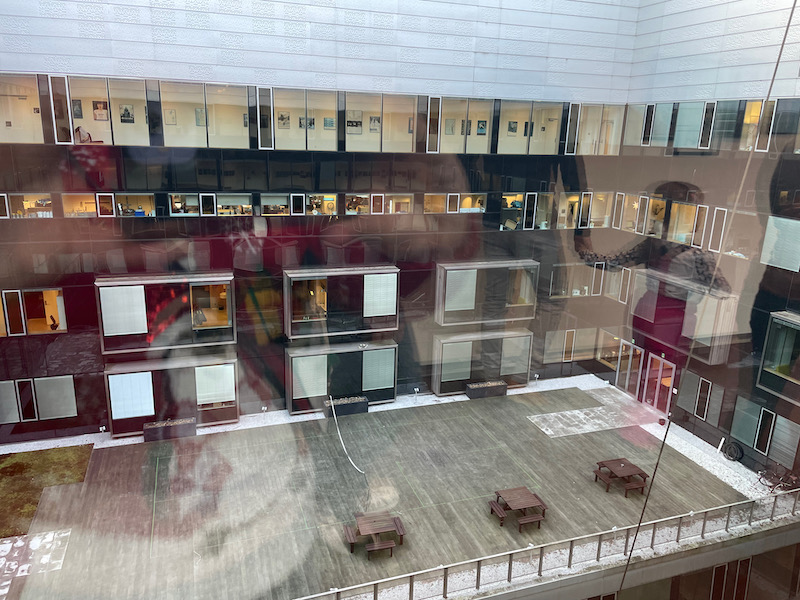
I mentioned earlier about the Vikings and it is one of the things that Norway is known for. While the Vikings had settlements all over Scandinavia, throughout Europe and even in North America, Norway is often the focus when we talk about the Viking Age. Most of the time, you see the Vikings shown as barbaric, axe-wielding invaders. But the Vikings also created complex social institutions, oversaw the coming of Christianity to Scandinavia, and left their mark on European history through trade, colonization, and exploration. One of the reasons that they traveled is to find better soil for farming, since there wasn't much farmable land on the western coast of Norway. Since the Viking Ship museum is currently closed for work, we decided to go to The Viking Planet instead, which is a digital Viking museum that was opened in 2019. There are quite a few different experiences, including a VR experience on a Viking ship. There is one place where you can take selfies with various viking backgrounds. I went with the nature background while Tom took part in the Viking Ship expedition.
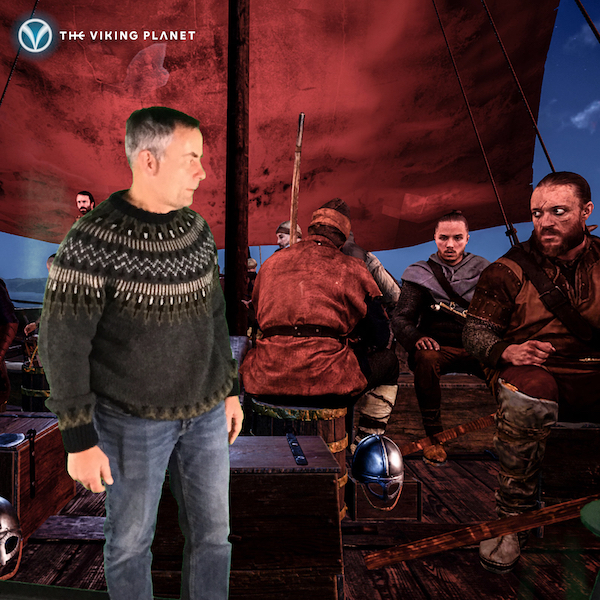

The last thing we did as a tourist was a visit to the FRAM museum, or the Polar Expedition Museum. There are various exhibits that cover various polar expeditions, from the first crossing of Greenland in 1888-1889 and the various expeditions to find the Northwest passage (the sea route between the Atlantic and Pacific oceans through the Arctic Ocean, along the northern coast of North America via waterways through the Canadian Arctic Archipelago), to the expeditions to the North and South Poles.
One large gallery held the ship from the Gjøa expedition (1903-1906). Roald Amundsen’s expedition with the Gjøa was the first to navigate the Northwest Passage north of the Canadian mainland on one expedition and one ship. He was accompanied by 6 others, and during this expedition, he proved that the Magnetic Pole moves over time. After making it from Oslo to Nome, Alaska, the boat itself was donated to the city of San Fransisco in 1909 where it sat in Gold Gate Park. It deteriorated and was restored in 1947-1949. It was moved back to Oslo in 1972 and was outside of the museum until 2012, when it was moved indoors. You can go onboard and then climb down and walk around.
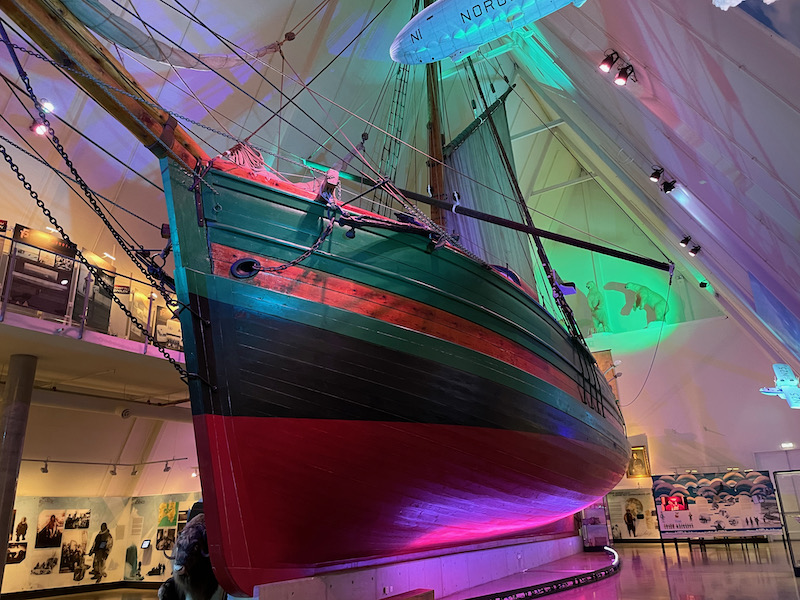
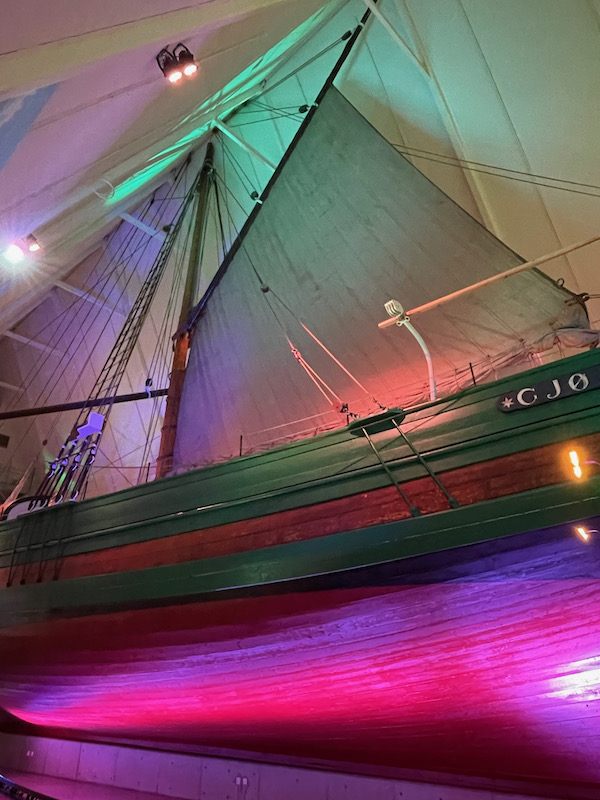
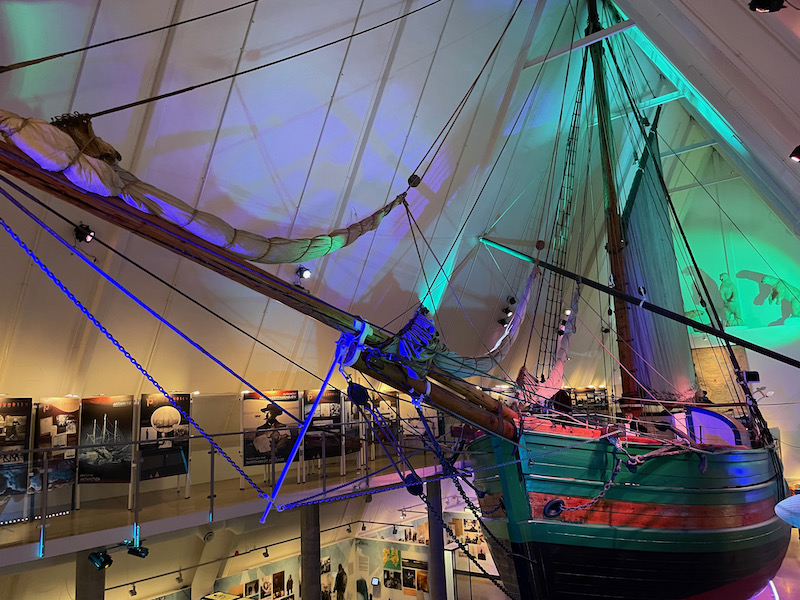
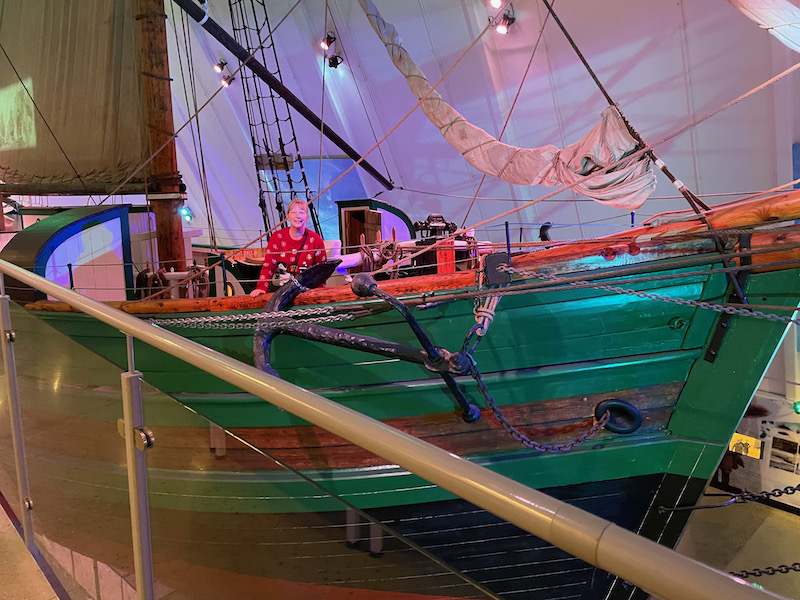
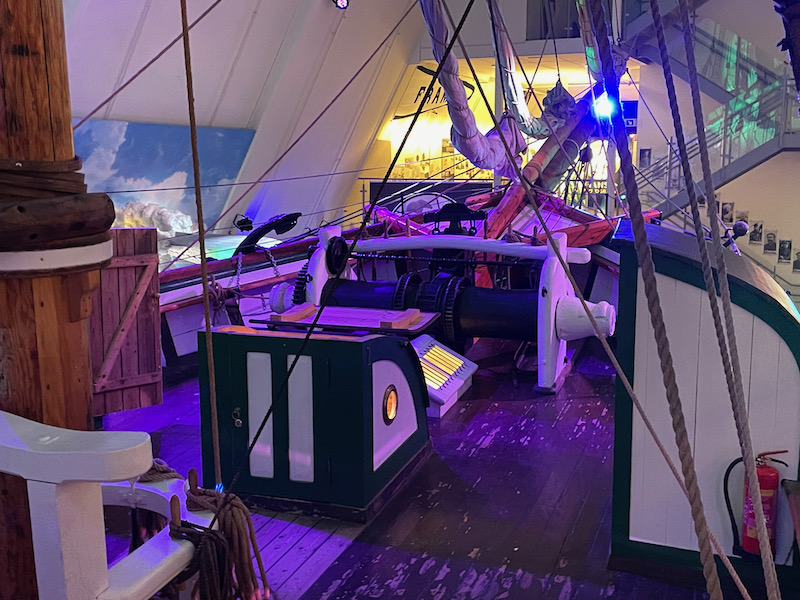
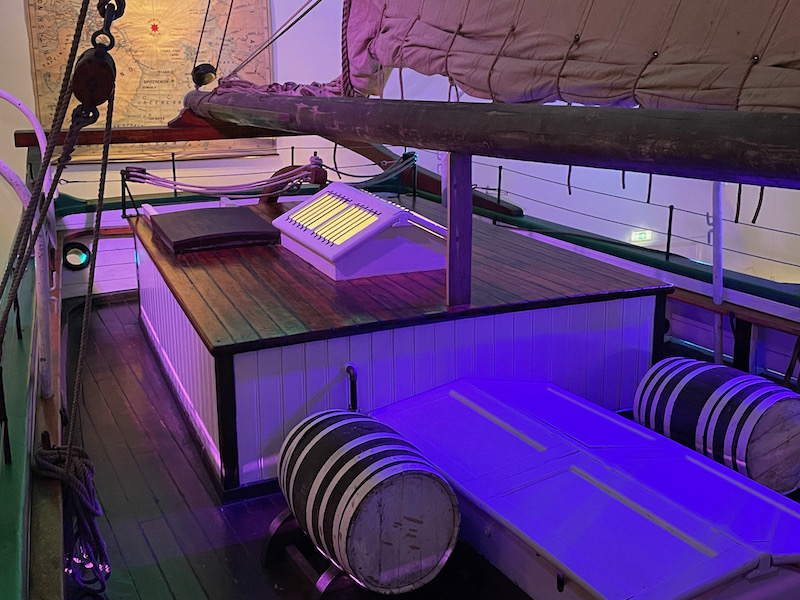
One exhibit was a bunch of jokes using actual pictures from the various exhibitions. Some of them were hilarious.
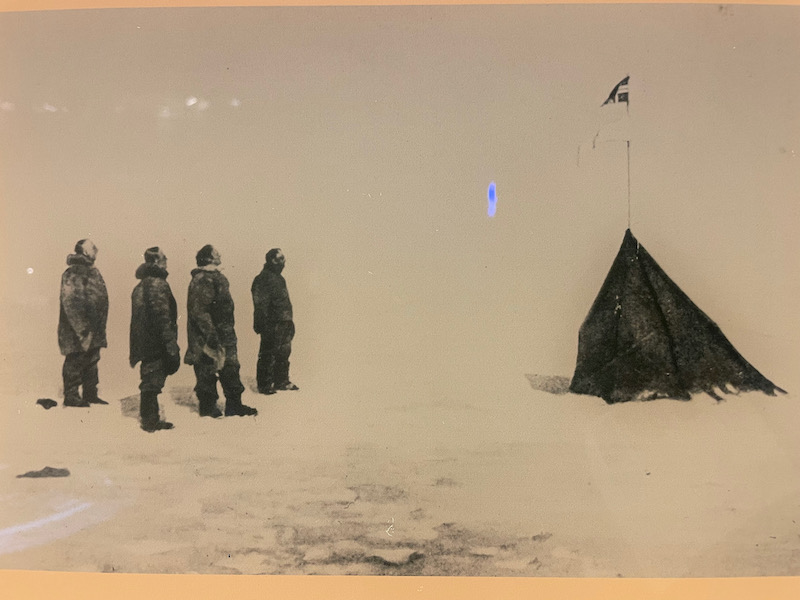
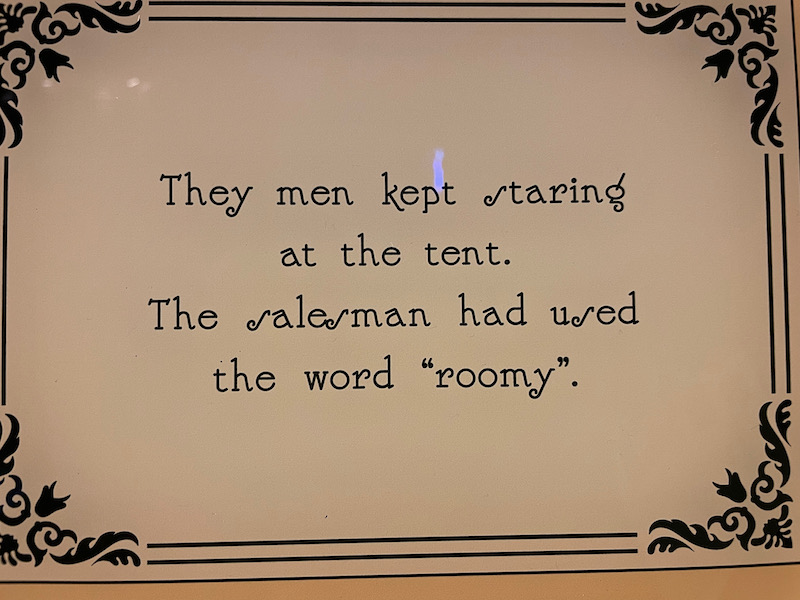
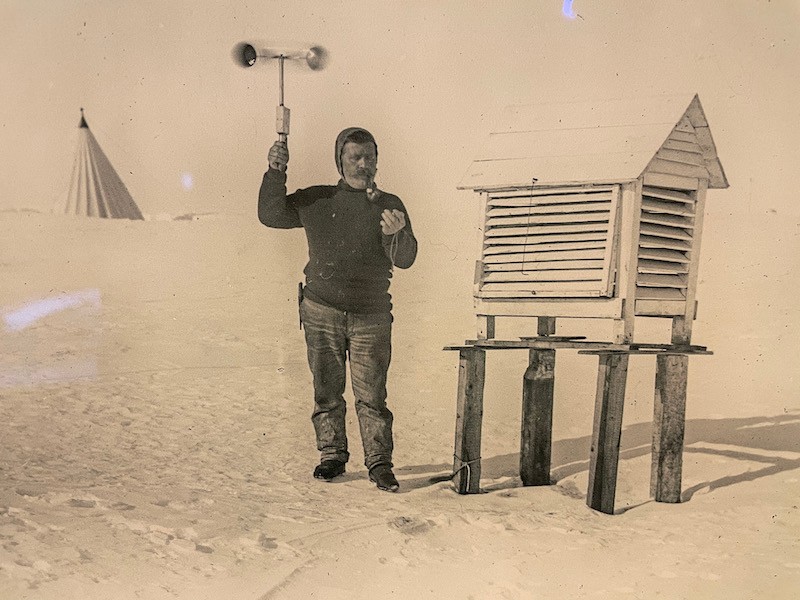

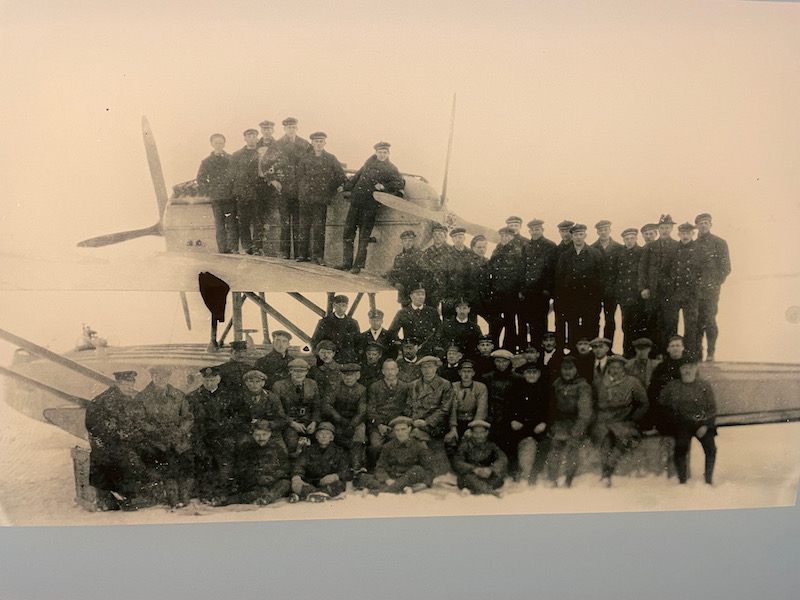
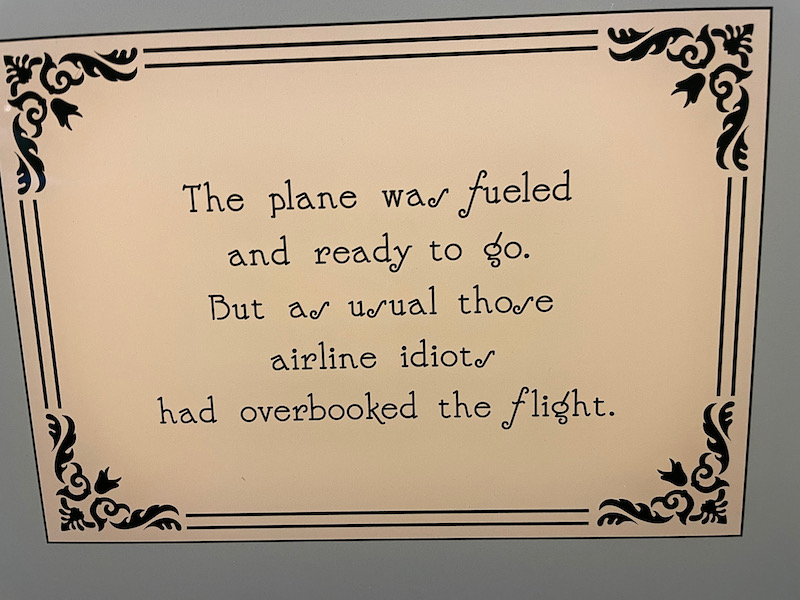
The centerpiece of the museum is (supposedly) the world's strongest wooden ship, the polar ship Fram. The Fram was the first ship specially built in Norway for polar research. She was used on three important expeditions: with Fridtjof Nansen on a drift over the Arctic Ocean 1893-96, with Otto Sverdrup to the arctic archipelago west of Greenland 1898-1902, and with Roald Amundsen to Antarctica for his South Pole expedition 1910-12. The windmill was added on the foredeck to provide electric lights. It only lasted a couple of years before the cogwheels were worn out and it was taken apart and the wood used to made other things. The first Fram expedition was to prove a theory from Fridtjof Nansen that the arctic ice drifted. The plan was to get the boat "trapped" in the arctic ice and verify the location of the boat over time. During this expedition, the Fram was carried hundreds of miles.
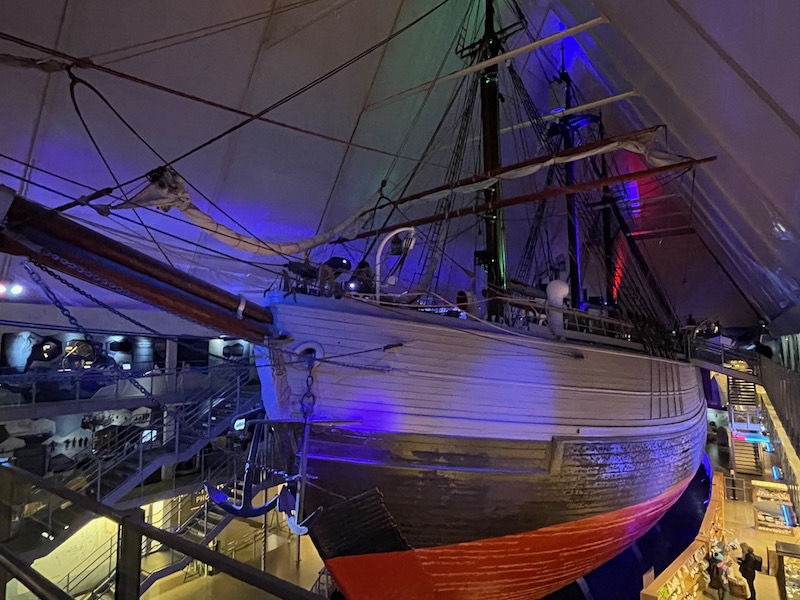
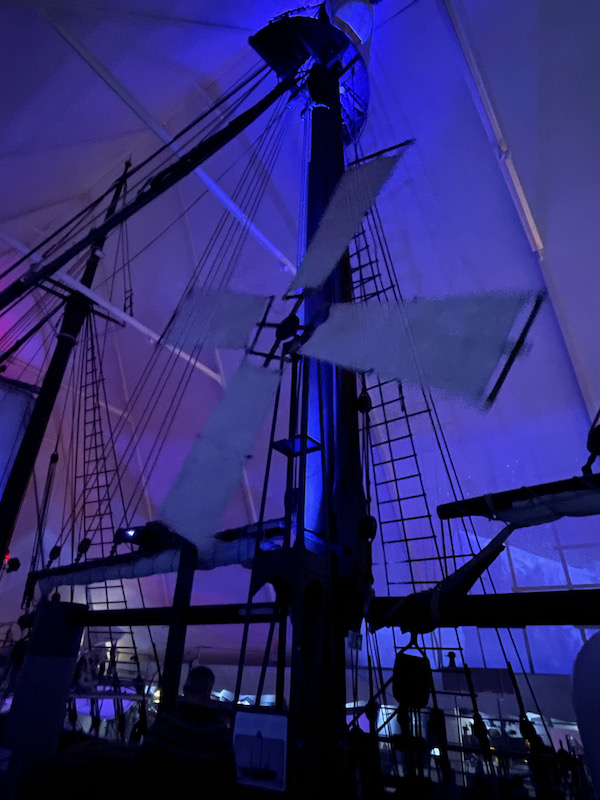
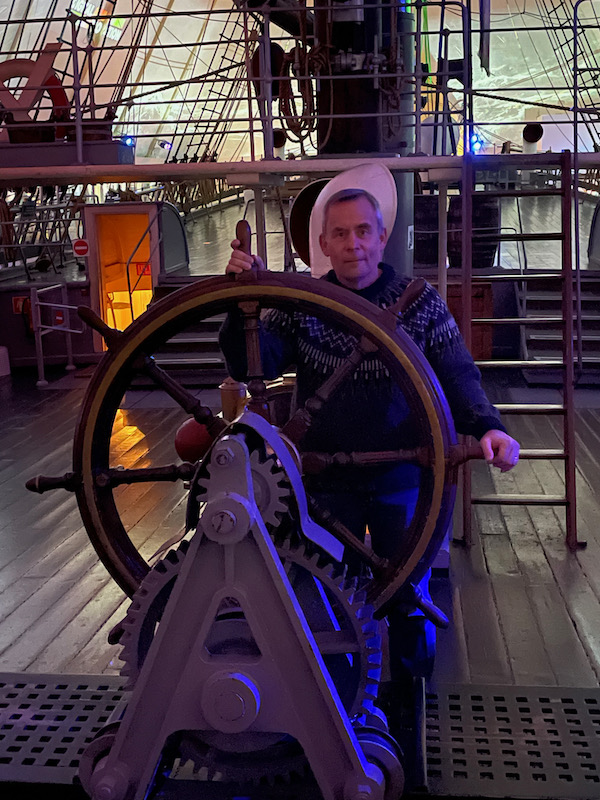
Our last dinner was at a place with this cute pig outside, so we decided to take a few pictures with her.
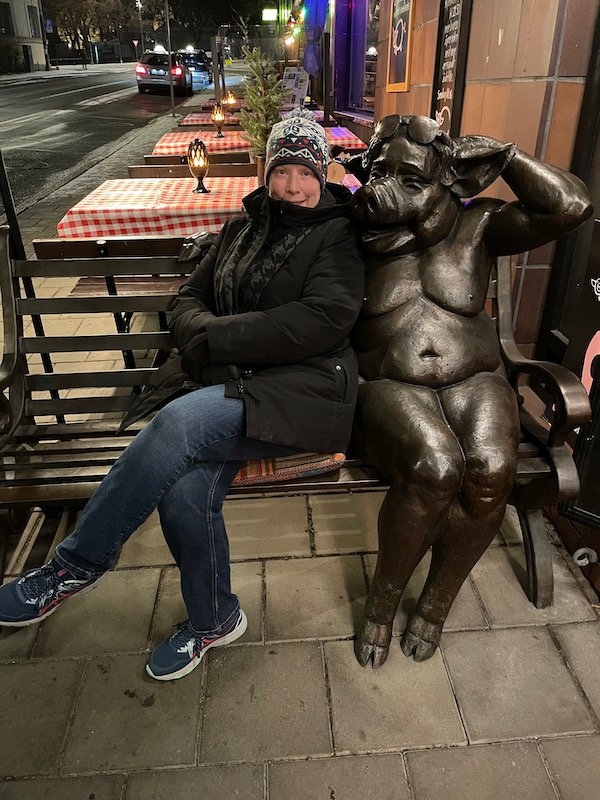
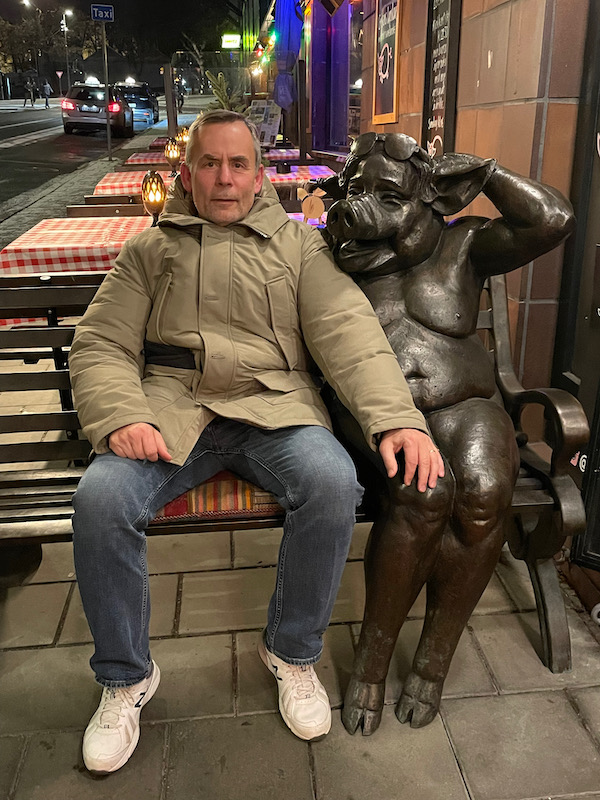
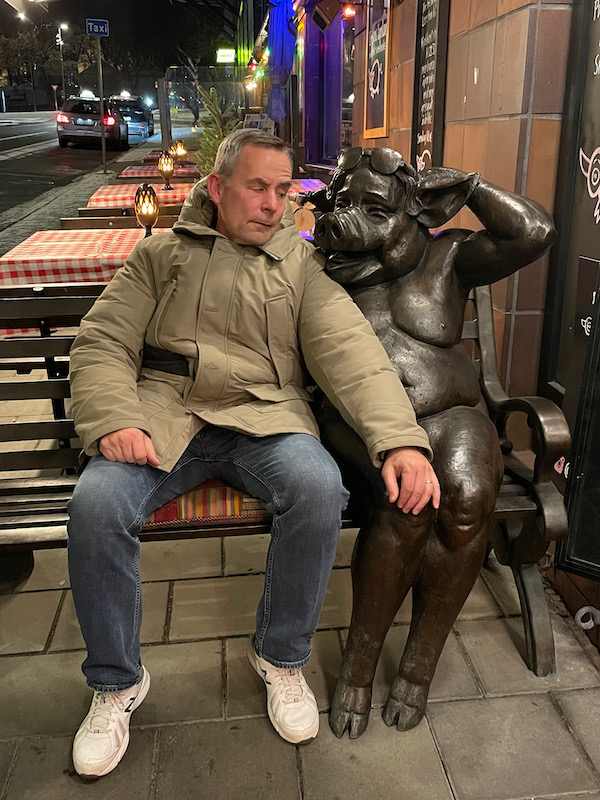
It started snowing a little before our last dinner, but then again the next morning as we were at the airport. Here you can see a bit of snow collecting outside of our plane window, and then we ended up going through de-icing.
